Gold prices soared above $4,300 this week. What’s driving the surge? 6:00 PM (just now)

As economic uncertainty deepens, the rush for gold continues—with prices for the precious metal topping $4,300 for the first time this week.
The going price for New York spot closed at a record $4,326 per troy ounce on Thursday. Futures also traded as high at more than $4,344 per troy ounce Thursday, before falling below the $4,300 mark Friday morning. Still, gold is up significantly over the last week, marking one of its best weeks to date.
Gold sales can rise sharply when anxious investors seek a “safe haven” for their money. For the U.S., the latest gains arrive amid the now weekslong government shutdown and ongoing trade wars abroad—with President Donald Trump most recently threatening to place much higher tariffs on China, before appearing to walk back those potential new levies as unsustainable. Still, his barrage of other import taxes has already strained economies worldwide. Meanwhile, the prospect of lower interest rates is also making gold a more attractive investment.
Why are gold prices going up?
Gold futures are up nearly 60% since the start of 2025—trading at about $4,268 per troy ounce, the standard for measuring precious metals, as of around 11:45 a.m. Friday. That’s up from around $2,670 at the beginning of January.
Silver has seen an even bigger percentage jump year to date. Silver futures are up about 70%, trading at over $50 per troy ounce Friday morning.
A lot of the rise boils down to uncertainty. Interest in buying metals like gold typically spikes when investors become anxious.
Much of this year’s economic turmoil has spanned from Trump’s trade wars. Since the start of 2025, steep new tariffs the president has imposed on goods coming into the U.S. from around the world have strained businesses and consumers alike—pushing costs higher and helping to weaken the job market. As a result, hiring has plunged while inflation has inched back up. And more and more consumers are expressing pessimism about the road ahead.
The U.S. government shutdown adds to those anxieties. Key economic data has been delayed—and scores of federal employees are already feeling the effects of furloughs and working without pay as long as the shutdown lasts, which has no immediate end in sight. The Trump administration also moved to use the shutdown to conduct mass firings, although a judge temporarily blocked such action.
Separately, analysts have pointed to continued weakness of the U.S. dollar and renewed rate cuts from the Federal Reserve. Last month, the Fed cut its key interest rate by a quarter-point—and projected it would do so twice more this year.
Investments in gold have also been driven by other factors over time. Over recent years, there’s been strong gold demand from central banks around the world—particularly amid heightened geopolitical tensions, such as the ongoing wars in Gaza and Ukraine.
And on Wall Street this week, several regional banks saw sharp losses amid scrunity over quality of loans, although recovery seemed to be steadying the market on Friday. Meanwhile, investors appeared to be distancing themselves from riskier assets like cryptocurrency—with bitcoin, for example, down 2.67%.
Will rising gold prices make jewelry more expensive?
Many jewelry merchants and dealers have increasingly reported surges in customers looking to check the value of gold they own—sometimes opting to melt or sell family heirlooms to cash in on the precious metal’s rising price.
At the same time, those in the market for gold jewelry may be feeling “sticker shock” if they can’t afford certain products anymore—particularly if it’s something impacted by both rising material costs and tariffs.
Larger retailers like Pandora and Signet have acknowledged these headwinds in recent earnings calls.
Is gold worth the investment?
Advocates of investing in gold call it a safe haven—arguing that the commodity can serve to diversify and balance your investment portfolio, as well as mitigate possible risks down the road as a hedge against rising inflation. Some also take comfort in buying something tangible that has the potential to increase in value over time.
Still, experts caution against putting all your eggs in one basket. And not everyone agrees gold is a good investment. Critics say gold isn’t always the inflation hedge many claim—and that there are more efficient ways to protect against potential loss of capital, such as derivative-based investments.
The Commodity Futures Trade Commission has also previously warned people to be wary of investing in gold. Precious metals can be highly volatile, and prices rise as demand goes up—meaning “when economic anxiety or instability is high, the people who typically profit from precious metals are the sellers,” the commission noted.
Gold demand escalates mercury poisoning warnings
The frenzy for gold has also resulted in health and environmental consequences — with officials pointing to rising demand for mercury, a toxic metal that is key in illegal gold mining worldwide.
Mercury is widely used to separate gold during artisanal or small-scale mining. But it pollutes water, accumulates in fish, makes its way into food and builds up in people’s bodies, leading to neurological and developmental harm. Even small-scale exposure can carry serious risks — putting in danger workers who rely on the industry, as well as residents in affected areas more broadly.
The Associated Press has reported about the effects of mercury poisoning tied to gold mining in countries like Senegal, Mexico and Peru, among other parts of the world.
—By Wyatte Grantham-Philips, AP Business Writer
Blood test can detect more than 50 kinds of cancer, new study suggests 4:45 PM (4 minutes ago)

A blood test for more than 50 types of cancer could significantly boost early detection and speed up diagnosis, according to a new study.
Made by U.S. pharmaceutical company Grail, the Galleri test aims to find fragments of DNA in a person’s blood that can indicate the presence of a cancerous tumor. Among the cancers that the test can detect, many have no current screening programs.
The PATHFINDER 2 study included more than 36,000 people aged 50 and older who had no cancer symptoms. In participants who were followed for more than a year, the test caught some 40.4% of cancer cases. For those who got a positive result on the Galleri test, 61.6% of them went on to be diagnosed with cancer—an improvement over previous trials of the test.
The results were presented on Saturday at the European Society for Medical Oncology meeting in Berlin, and have yet to be published in a peer-reviewed journal.
Boosting cancer diagnosis
In the study, the Galleri test, when combined with already existing screening for breast, cervical, colorectal, lung, and prostate cancers, “yielded a more than seven-fold increase in the cancer detection rate,” according to Grail’s president Josh Ofman in a press release.
Galleri also detected many cancers which don’t have standard screening tests, including notoriously hard to diagnose forms of the disease, such as ovarian and pancreatic cancer.
More than half (53.5%) of the cancers detected by the test were stage I or II, according to Grail. And the test was also able to predict the origin of the cancer accurately 92% of the time, according to the study.
Promising results
Grail says the blood test could save lives through early detection. The company’s president of biopharma, Sir Harpal Kumar, told the BBC that the results were “compelling.”
“The vast majority of people who die from cancer do so because we find their cancers too late,” he said. But other experts cautioned that more research is needed before the test is ready for primetime, Sky News and the BBC reported, with one expert telling the BBC more work would be required to “avoid overdiagnosing cancers that may have caused harm.”
The test is currently being trialed in England in 140,000 people, with results expected next year, according to the BBC.
Australia shares tips to wean teens off social media ahead of ban. Will it work? 4:00 PM (49 minutes ago)

The Australian government has begun a public education campaign with tips on how to wean children off social media ahead of a world-first national 16-year age limit taking effect in December.
Australian eSafety Commissioner Julie Inman Grant said Friday that information on her agency’s website, esafety.gov.au, explained the new laws and how to navigate them.
Starting Dec. 10, platforms including Facebook, Instagram, Snapchat, TikTok, X and YouTube could be fined up to 50 million Australian dollars ($33 million) if they don’t take reasonable steps to prevent Australians younger than 16 from holding accounts.
Messages raising awareness will also be shared starting Sunday across digital channels, television, radio and billboards.
“We want children to have childhoods. We want parents to have peace of mind and we want young people—young Australians—to have three more years to learn who they are before platforms assume who they are,” Communications Minister Anika Wells told reporters, referring to the current de facto 13-year age limit for social media accounts based on U.S. privacy legislation.
How are Australians reacting to the ban?
The Australian age restrictions have already proved polarizing, with some experts warning the changes will harm as well as protect children. More than 140 Australian and international academics signed an open letter to the government last year opposing a social media age limit as “too blunt an instrument to address risks effectively.”
Despite that warning, the laws passed with resounding support last year. The platforms had a year to figure out how to comply without foolproof technology available to verify ages.
Inman Grant said the social media age restriction would be a “very monumental event for a lot of young people.”
Teens given checklists to prepare
Her agency offered checklists and conversation starters about ways to make the transition, such as following an online influencer through a website rather than a social media account, she said.
“How do we start weaning them from social media now so it isn’t a shock on Dec. 10? How do we help them download their archives and their memories and how do we make sure that they’re in touch with friends and are aware of mental health support if they’re feeling down when they’re not tethered to their phones over the holiday period?” she added.
The agency’s teen “get ready” checklist includes suggestions such as “map your digital world” and to take practical steps like finding other ways to follow their favorite influencers online or scheduling regular phone calls with their friends. The entire list is as follows:
- Understand what’s changing and why
- Workout which accounts you’ll lose
- Map your digital world
- Explore other ways to connect and belong
- Build your community
- Protect your digital memories
- Avoid last-minute stress
- Find support
Will other countries follow Australia’s lead?
Australia’s move is being watched closely by countries that share concerns about social media impacts on young children.
Denmark’s Ambassador to Australia Ingrid Dahl-Madsen said her government would use its current presidency of the Council of the European Union to push the agenda of protecting children from social media harms.
“This is something that is a global challenge and we are all looking at how we can manage it best and we are looking to Australia and we will be looking at what Australia does,” Dahl-Madsen told Australian Broadcasting Corp. in Melbourne on Monday.
“It’s so important that Australia and Demark and the EU—we share lessons, we compare experiences and we can push forward hopefully practical progress on this,” she added. It was about “protecting our children in this digital world that is increasingly complicated.”
The Danish government last week proposed legislating an age limit of 15. But Dahl-Madsen said Denmark would consider letting parents exempt their children who were 13-14. Australia has no similar exemption.
—By Rod McGuirk, Associated Press
Meta is asking Facebook users to give its AI access to their entire camera roll 3:30 PM (last hour)
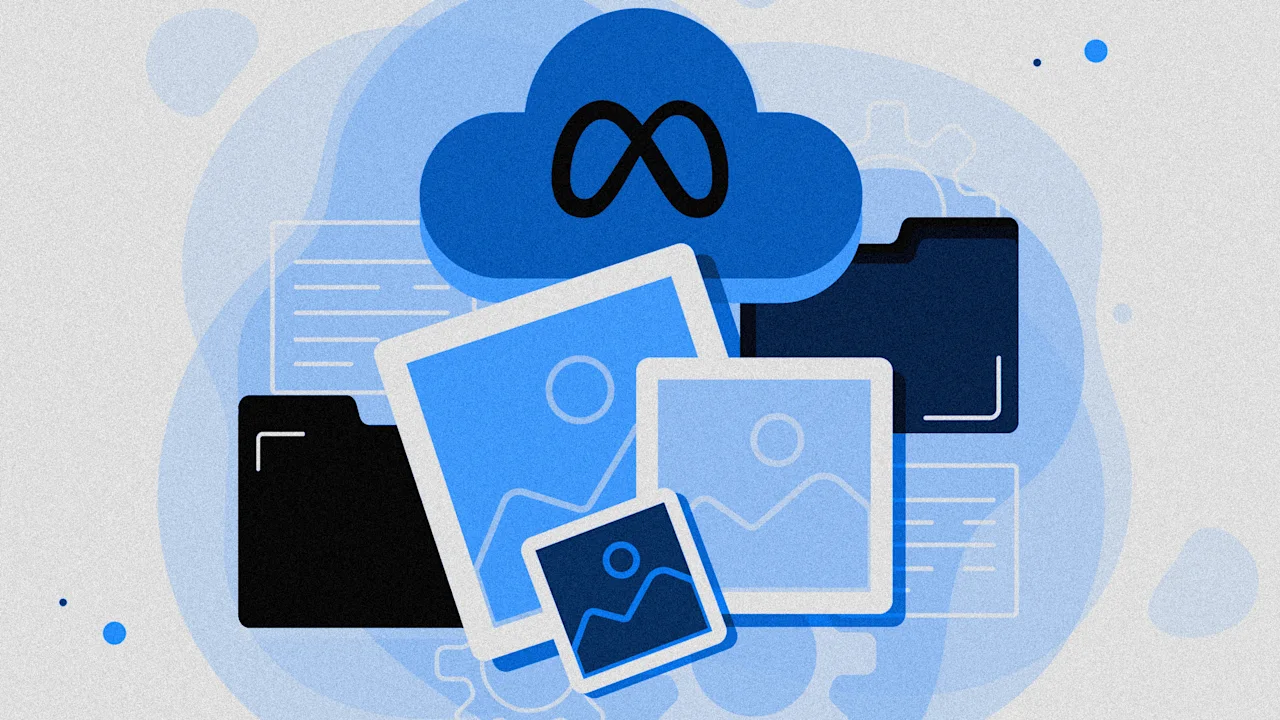
Meta is rolling out a new Facebook feature that the company says will help users share more photos—but which could also be used to help train its AI.
The opt-in feature allows Facebook’s AI to access your phone’s camera roll in order to find photos it finds “shareworthy,” and to suggest edits using its AI tools. Users can then decide if they want to share the images or not.
“With your permission and the help of AI, our new feature enables Facebook to automatically surface hidden gems—those memorable moments that get lost among screenshots, receipts, and random snaps—and edit them to save or share,” Meta said in its announcement explaining the new feature on Friday. The platform will also suggest “fun edits” for users to share.
The new feature has been rolled out in the U.S. and Canada, and Meta aims to roll it out in additional countries soon.
What are users opting into?
Meta’s latest feature announcement says that for users who opt in, the feature makes photo sharing suggestions that “are private to you,” and that nothing will be shared unless you agree. Meta also said Facebook won’t “use media from your camera roll to improve AI at Meta”—unless you use its AI to edit or upload the photos.
Fast Company reached out to Meta for comment but did not hear back by the time of publication.
Meta already gathers Facebook user data to train its AI. In a 2023 announcement, Meta said it could use any user data shared on Facebook or Instagram to train its AI.
“Generative AI models take a large amount of data to effectively train, so a combination of sources are used for training, including information that’s publicly available online, licensed data and information from Meta’s products and services,” the company said at the time. “Publicly shared posts from Instagram and Facebook—including photos and text—were part of the data used to train the generative AI models underlying the features.”
Meta’s terms also state that “your interactions with AI features can be used to train AI models. Examples include messages to AI chats, questions you ask and images you ask Meta AI to imagine for you.”
This is also not the first time Meta has asked users permission to look at their camera rolls. In June, Facebook began asking users for access to their phone’s camera roll to automatically suggest AI-edited versions of their photos, including images they had not posted for public viewing. Users who wanted to use the feature were prompted to opt-in to “cloud processing,” allowing Facebook access to their camera roll, as well as opting in to Meta’s Terms of Service, which includes agreeing to allow its AI to “retain and use that information to provide more personalized Outputs.” At the time, Meta told The Verge that it was not currently using those photos to train its AI models.
Fast Company has previously written about how hard Meta has made it for Instagram users to opt out of AI training. Users who want to opt out have to answer a series of questions and explain why they don’t want the app to use their data. Requests are then subject to a review process, which suggests the company can decide whether to honor the request. Meta noted in its Friday announcement that users can manage or disable the new AI photo feature at any time in Facebook’s camera roll settings.
This week in business: Cinnamon scares, AI badges, and gold’s big glow-up 11:30 AM (5 hours ago)
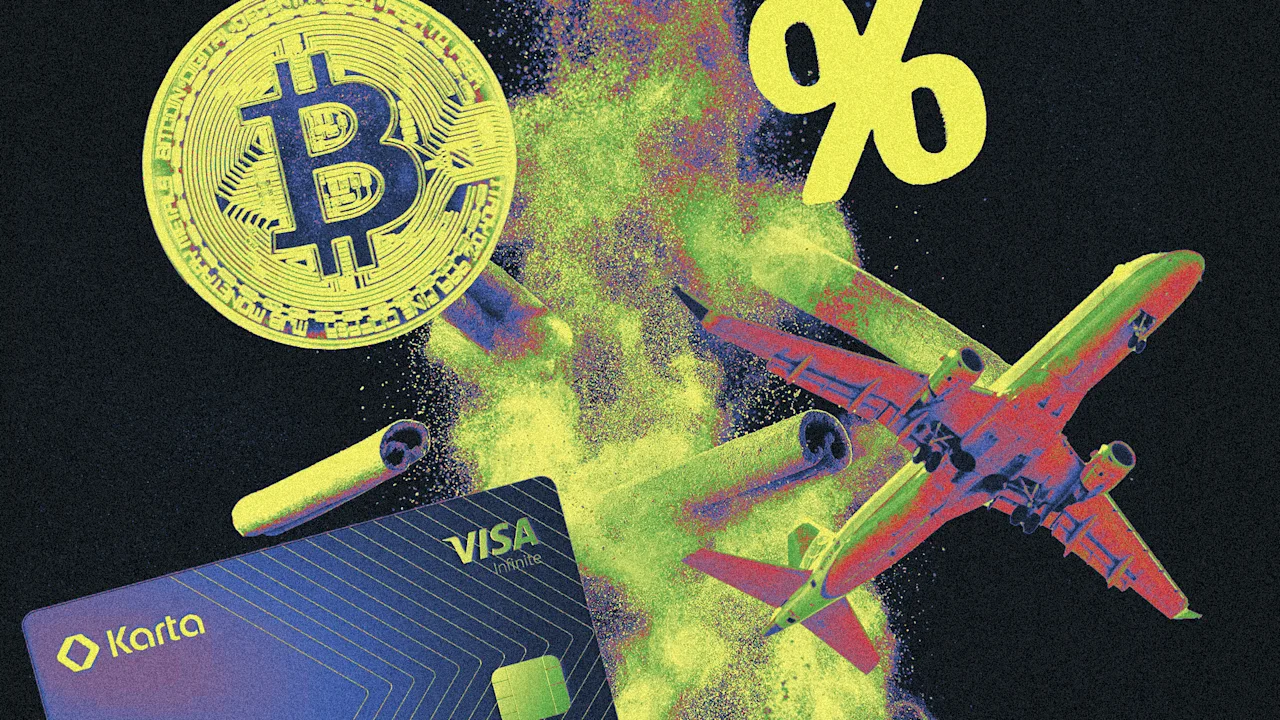
Your pantry, your portfolio, even your flight plans all made headlines this week.
The FDA turned everyone’s favorite spice into a hazard warning, while the world’s wealthiest got a new credit card that skips the whole Social Security number thing. Washington’s still stuck in neutral—though a few lucky borrowers are finally seeing their student loans disappear—and airports are feeling the fallout. Meanwhile, Bitcoin’s on a downward spiral, gold’s having a moment, and the housing market’s math still doesn’t add up no matter how many times you punch the calculator.
Retailers, at least, seem to be thriving in chaos. Walmart doubled down on AI, cutting a deal with OpenAI so shoppers can chat their way through checkout, then followed up with plans to blanket its supply chain in smart sensors. Over in the cultural corner, major news outlets refused to play ball with the Pentagon’s new press rules, and the Boy Scouts—now Scouting America—rolled out merit badges in AI and cybersecurity.
If that sounds like a lot, it is. The throughline? Whether it’s your cinnamon or your shopping list, everything familiar is getting rewired in real time. Here’s a look at what made headlines this week.
FDA widens ground cinnamon warning over elevated lead
The FDA expanded its list of ground cinnamon products to avoid, citing testing that found elevated lead levels and urging consumers to discard affected items. Sixteen products now sit on the list, spanning multiple distributors and retailers with specific lots and best-by dates. No illnesses are confirmed, but the agency warns long-term exposure can harm children’s development, and the list has grown through multiple updates since July 2024.
A premium no-SSN card takes aim at AmEx Platinum’s turf
Fintech startup Karta unveiled a $300-annual-fee premium card for affluent non-residents with U.S. assets—no Social Security number required. Perks mirror marquee travel cards (lounges, events, protections), and the product is managed via WhatsApp with AI-assisted service. Backed by $5.4 million in seed funding and 22 banking partners, Karta is targeting customers hit by steep foreign card fees and the wind-down of AmEx’s International Dollar Card.
IBR student-loan forgiveness resumes for eligible borrowers
Notices are landing in inboxes for borrowers on the Income-Based Repayment student loan plans who’ve hit 20- or 25-year payment thresholds. The move restarts discharges paused in July amid systems updates and litigation fallout. It’s not a new program—just the promised IBR relief catching up—so borrowers should keep paying until they receive official confirmation.
Scouting America adds AI and cybersecurity merit badges
Scouting America introduced new badges covering machine learning basics, prompt communication, deepfake awareness, and cybersecurity concepts this week. The goal is to marry traditional “be prepared” ethos with digital-age fluency. It’s also a retention play as membership has fallen from historic peaks, with newer badges designed to meet kids where they live—online.
Flight delays mount as shutdown enters week three
A mix of bad weather and shutdown-related staffing strain produced tens of thousands of flight delays across the long weekend. Trade groups say flying remains safe, but chokepoints at Northeast hubs added to traveler frustration. With Congress still gridlocked, operational unpredictability remains the near-term baseline.
Bitcoin swoons while gold shines
After notching an all-time high earlier this month, Bitcoin slid to a four-month low this week as investors rotated toward gold. Macro jitters—from tariffs talk to the federal shutdown—pressed risk appetite. The move highlights crypto’s evolving “safe-haven” narrative: sometimes it benefits from stress, sometimes the old haven still wins.
Zillow: “Unrealistic” rate cuts needed for affordability
Back-of-the-envelope modeling suggests the average 30-year mortgage would need to drop to ~4.43% to make a median home affordable to a median-income buyer (assuming 20% down). In several coastal markets, even 0% rates wouldn’t fix the math given taxes, insurance, and upkeep. Zillow’s takeaway: don’t bank on rates—or prices—bailing out budgets soon.
Walmart to enable ChatGPT checkout with OpenAI
Walmart announced an “agentic commerce” tie-up so shoppers can purchase via natural language directly in ChatGPT. The integration leans on OpenAI’s Instant Checkout and Agentic Commerce Protocol, pitching fewer clicks and more personalization. Investors liked the direction of travel, framing it as an on-ramp to AI-assisted shopping at mass scale.
Major outlets reject Pentagon press rules
Major news outlets including The New York Times, AP, and Fox News have said they won’t sign the Defense Department’s new required policy governing access and information requests, leading them to leave the Penagon this week.
Newsrooms argue the rules impact routine reporting and set a troubling precedent; the government says they’re common-sense procedures. The standoff raises practical questions about credentialing and transparency.
Walmart rolls out ambient IoT sensors across supply chain
In a parallel modernization push, Walmart plans millions of battery-free sensors on pallets to track inventory across 4,600 stores and 40+ distribution centers, expanding nationwide in 2026. The data will feed Walmart’s AI systems to improve accuracy, cold-chain compliance, and on-shelf availability. It’s a scale bet that visibility equals velocity—and profit.
Building House of Highlights into a sports media powerhouse 11:00 AM (5 hours ago)
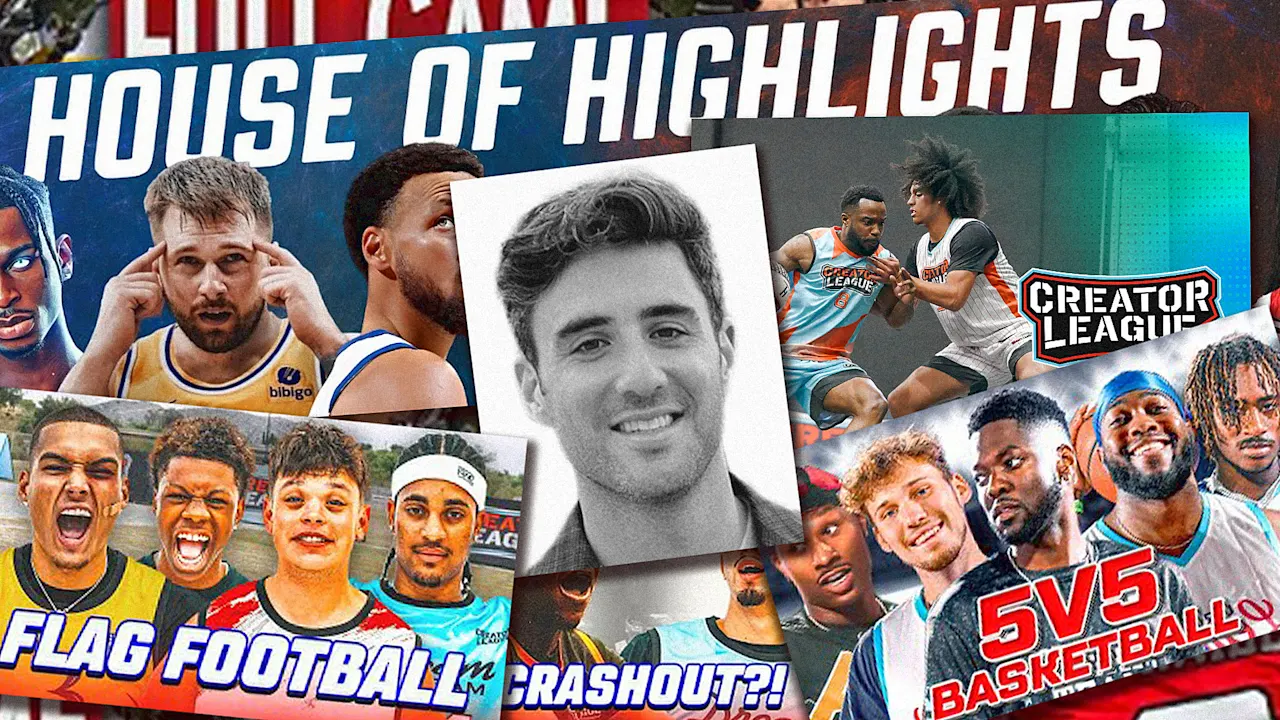
You’ve probably heard of House of Highlights—even if you’re not a sports fan, it’s hard to miss, whether on YouTube or scrolling through your social feeds.
What started as a college dorm Instagram account has grown over 11 years into the #1 sports media brand on the platform, boasting 100 million followers and billions of monthly views.
Today, House of Highlights is a multi-platform sports media powerhouse, producing creator-led content and original series that rival traditional TV. Drew Muller, vice president and general manager at House of Highlights, spoke with Yasmin Gagne and Joshua Christensen on the Most Innovative Companies podcast about growth strategies, creator partnerships, and how the company balances viral moments with long-form storytelling.
How did House of Highlights start?
[The genesis of the project came from] a guy named Omar Raja in his college dorm room. The idea was: “I’m not seeing the highlights that I want on the platforms where I’m spending time.” Seems like kind of table stakes now that you see the proliferation of highlights basically everywhere you look on social media. But back then it really was a novel idea.
And the Bleacher Report leadership at the time [. . .] led the acquisition of bringing in this Instagram account into the sports world and saying, “this account is doing something interesting—it’s speaking with young people, it’s overperforming in ways that seem to not map to what typical sports companies are doing.”
[It was ultimately a credit to Bleacher Report] who let House of Highlights incubate as a startup within the larger company, allowing it space to grow and preserve its unique voice.
From there, the idea was: let’s figure out if we can make this into a multi-platform media company that can stand on its own and be incremental to what Bleacher Report was already doing. So how do we make this differentiated and give fans a reason to want to follow both accounts?
How do you make sure House of Highlights keeps its own voice and identity?
A lot of it maps down to a steadfast commitment to voice and clarity of who we are and who we’re not. A lot of it is due to the organizational structure where House of Highlights is able to maintain operational and strategy independence. We have our own go-to-market strategy, we have our own assets and content strategy and logos and identities and even fonts.
But it does take a day-in and day-out focus to balance the two, because we do eat from the same pool of sports rights and sometimes resources.
You moved from Instagram highlights to hour-long programming. What were the conversations like around developing long-form content?
When we first started to make original content, it was almost out of necessity creator-led. We were a small scrappy team, and in many instances we couldn’t afford to pay huge athletes. There were creators that were starting to blow up on Instagram and YouTube, but were nowhere near the scale we’re talking about today. We were able to form big partnerships with creators that are now household names [like] Supreme Dreams, and Mark Phillips. All of it tied back to sports, youth culture, and putting an entertaining lens on what it is to be a sports fan or to experience sports with your friends in a group chat.
The most value that we’ve gotten from building habitual long-form viewership is making sure that an hour or two-hour-long video has a clear path to short form [because] we have massive amounts of short-form expertise and scale, and people are expecting that from us.
How has House of Highlights’ approach to creator deals evolved?
[When looking at the creator’s growth chart, we want to be] where they’re starting to take off, but before they get to the point where they’re a household name and they’re the cream of the crop, not to say we don’t still want to work with them at that point, but typically that’s when they’re getting overpaid by some of the legacy companies.
[We] built a lot of the formats that have been replicated by many of the big leagues and some of the big media companies. [Creators] know they’re not just showing up for an appearance fee or to check a box. We’re trying to build special content together and special franchises and IP that can scale.
House of Highlights, as we’ve discussed, is publishing across multiple platforms. How do you approach content programming across those platforms that all reward different types of content and cadence?
[On YouTube], you’re going to see full game recaps for folks that maybe aren’t in the cable bundle and aren’t watching two- to three-hour games—they typically come to House of Highlights YouTube for a 10- to 15-minute recap of that game.
On TikTok, because of how the For You Page operates, you can publish more, and those videos will find their homes without taking up all of someone’s feed. On Instagram, if someone follows House of Highlights and we’re publishing a hundred times a day, it will feel like that in your feed.
Under-34 sports fans are watching less and less live cable sports events—[so how] can we build an appointment viewing experience for that fandom? From an advertising perspective, obviously that is super valuable, and it’s increasingly hard to reach that audience at scale.
What’s next for House of Highlights?
We’ve got three events left in our Creator League season. We’ve got a basketball knockout five on five, and then a championship series. That’ll carry us through the end of November. Based on the numbers that we’re seeing, we’re excited about what the championship could look like.
And then honestly, the growth of our Fans versus Haters series and where that overarching brand can go in terms of debate style content for a younger audience.
[At the end of the day, a lot of it] comes down to our focus on YouTube and how we’re making House of Highlights a broadcast channel.
An entry-level homebuilding boom in the Southeast smacks into a shifted housing market 10:00 AM (6 hours ago)

Want more housing market stories from Lance Lambert’s ResiClub in your inbox? Subscribe to the ResiClub newsletter.
In early October, a post on X by FreightWaves founder and CEO Craig Fuller caught my attention:
Speaking with a home builder last night (Chattanooga, TN):
— Craig Fuller 🛩🚛🚂⚓️ (@FreightAlley) October 4, 2025
High-demand in the low-end of the market (<$300k), as people are looking to upgrade from renting. Can't build enough.
Almost no demand in middle market ($300k-700k), as it tends to be the upgrade market and the buyers…
While Fuller’s narrative rings true in some pockets of the country, it isn’t the case everywhere. The dynamics he describes—strong demand at the low end, softness in the middle—reflect certain regional realities, but not necessarily what’s unfolding across the broader Southeast housing market.
According to my reporting and research, there’s currently a lot of variation by price tier. Several Southeast homebuilders have told me they’ve actually seen greater softening in the entry-level segment over the past year—the very segment many builders have been chasing. Some rolled out smaller floor plans or trimmed square footage to entice priced-out homebuyers, but those efforts are now meeting slower demand. Meanwhile, the higher tiers have held up better.
Part of that cooling stems from simple oversupply and stretched affordability. Builders across the Southeast ramped up production of smaller, sub-$350,000 homes in 2023 and early 2024. But elevated insurance premiums, rising property taxes, and household budget fatigue have since taken a toll, especially in Florida and parts of Georgia.
This month, I launched the ResiClub Terminal—a new platform that includes analysis by home-price tier: lower-tier (5th to 35th percentile), middle-tier (35th to 65th percentile), and upper-tier (65th to 95th percentile) homes, all broken out by market. That tiered data confirms what Southeast builders are reporting: The lower end of the market has shown the greatest weakness over the past year across much of the region.
Lower-tier home price year-over-year change 👇
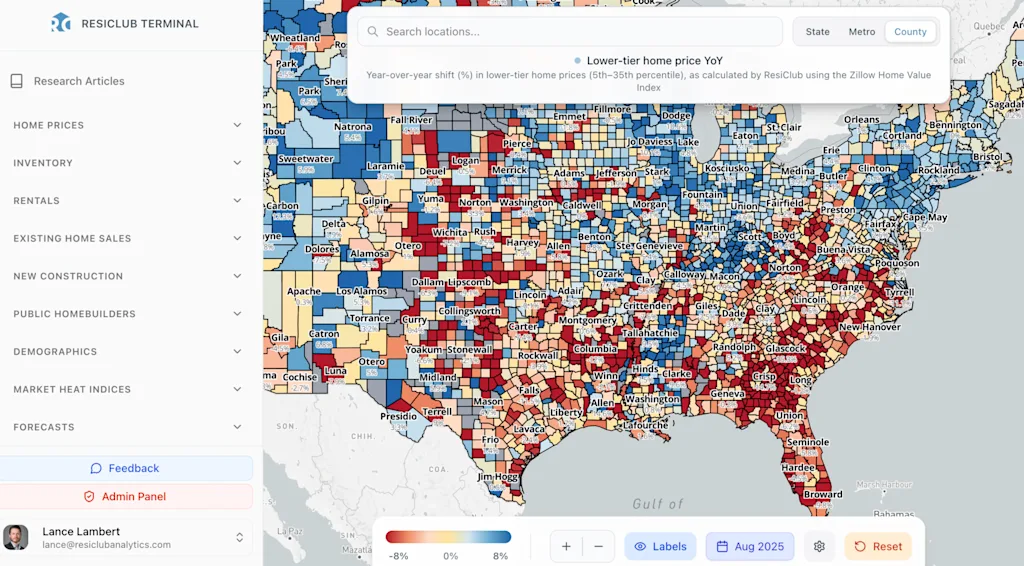
Upper-tier home price year-over-year change 👇
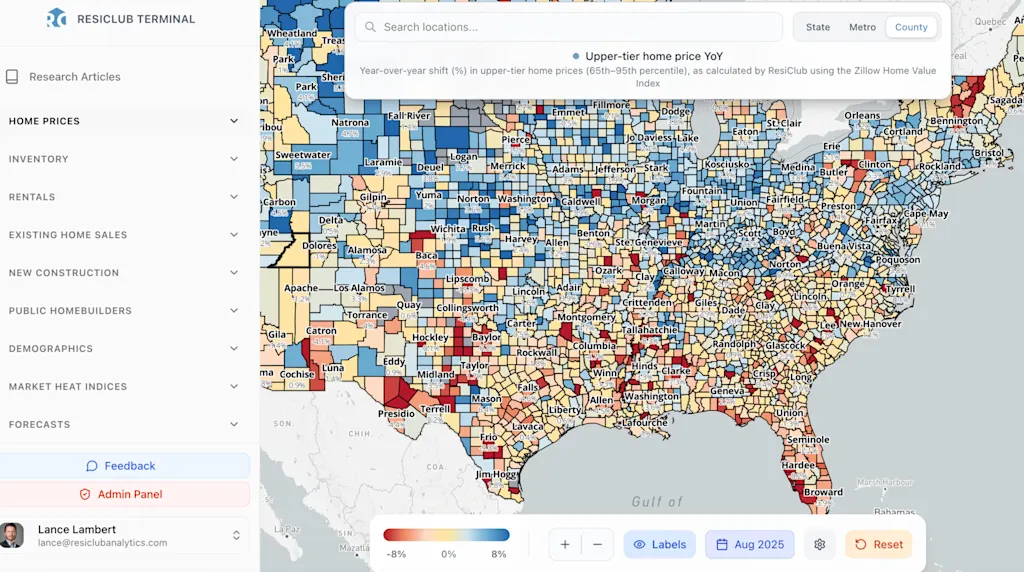
Within the ResiClub Terminal, ResiClub PRO members can click on individual markets to see this data down to a local level. For example:
Lower-tier home prices are down 7.5% year over year in DeKalb County, Georgia.
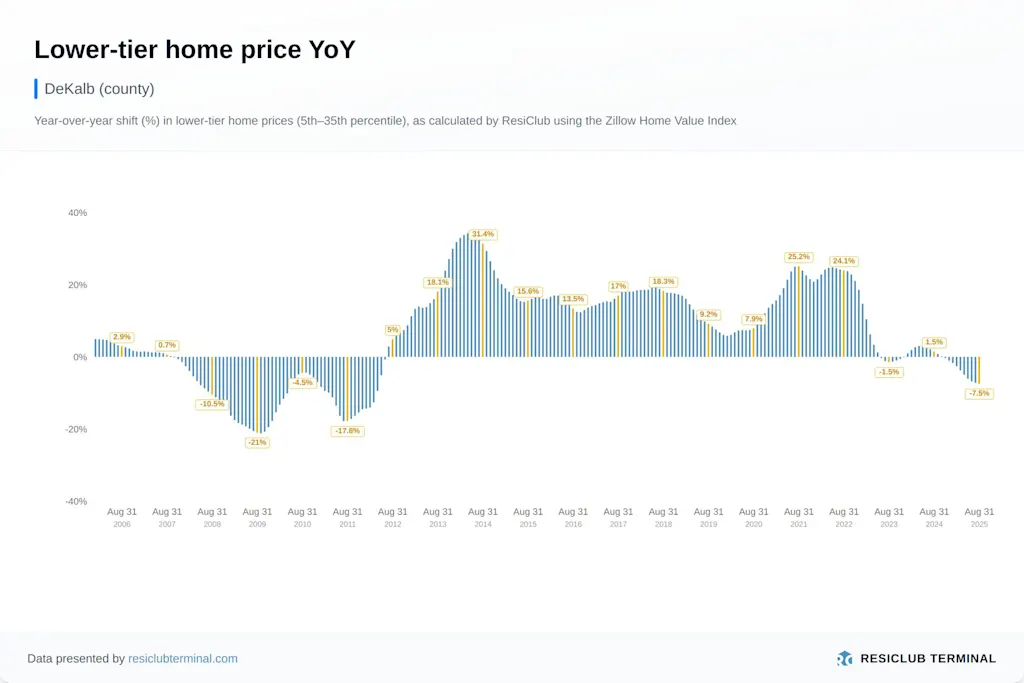
Upper-tier home prices are down 0.9% year over year in DeKalb County, Georgia.
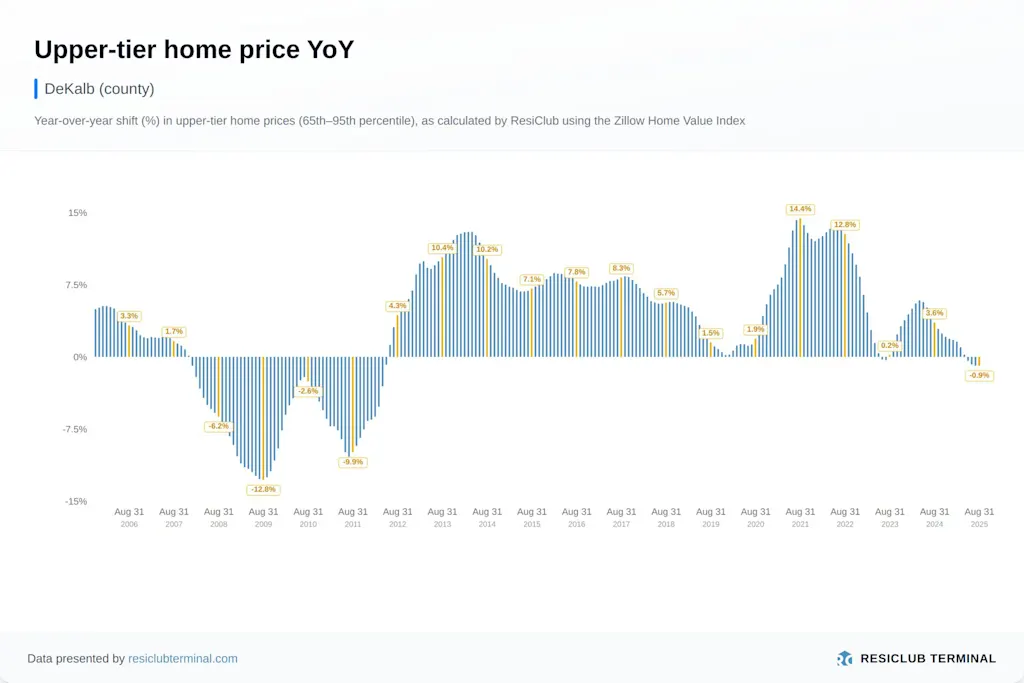
When you zoom out and look at this on a nationally aggregated basis, the upper-tier, middle-tier, and lower-tier stats are all pretty close.
- Upper tier: -0.1%
- Middle tier: +0.2%
- Lower tier: +0.6%
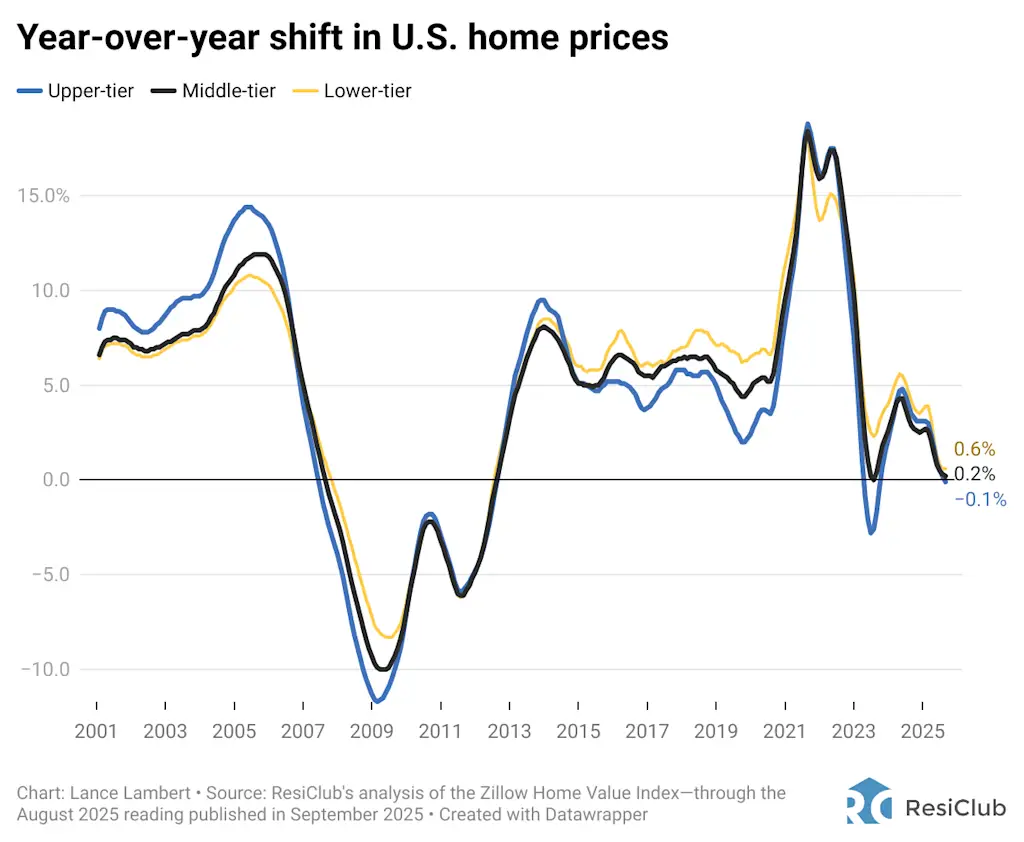
The fact that current housing market dynamics by price tier are nearly identical on a nationally aggregated basis—despite significant underlying variation—is a reminder that it’s important for housing stakeholders to have accurate, localized information.
Here’s what the new 401(k) tax-break guidelines may mean for you 10:00 AM (6 hours ago)
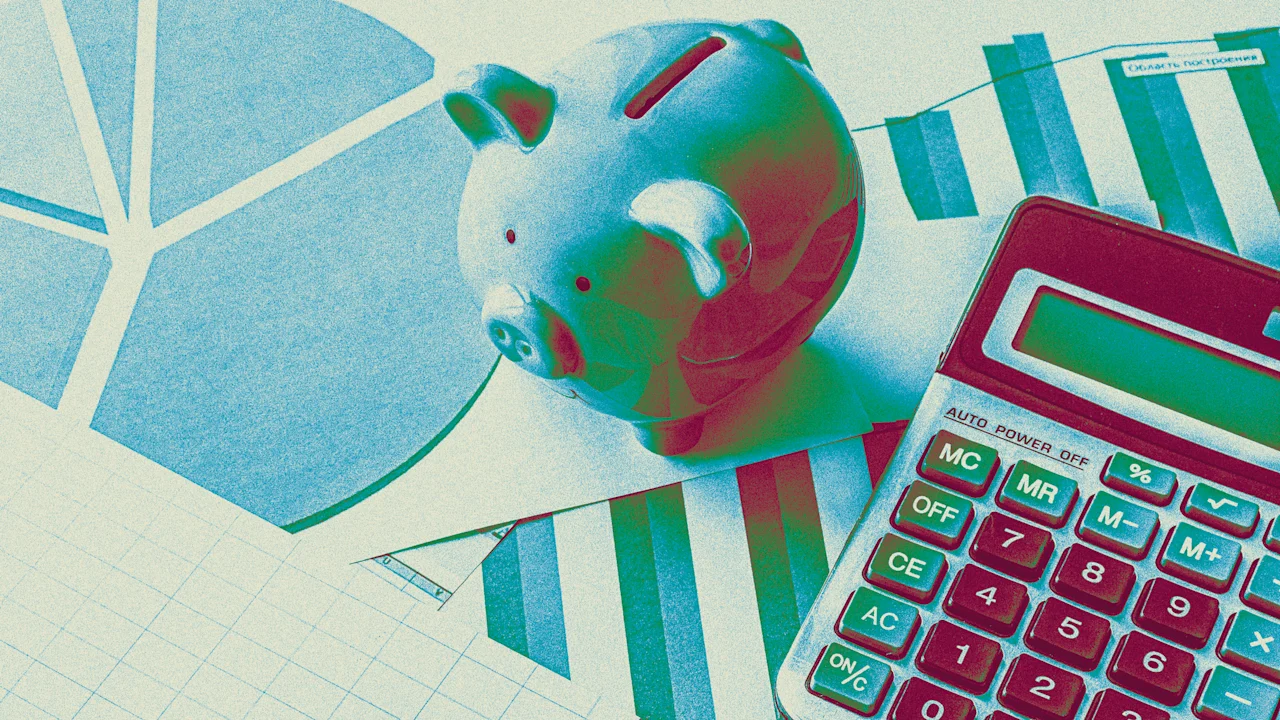
It’s human nature to wait until the last minute rather than plan ahead—perhaps especially when it comes to retirement planning. There’s always plenty of other excellent uses for your money, until suddenly you’re staring at an underfunded 401(k) with only a few years left before you’ll need it.
This is why president George W. Bush passed legislation in 2001 that (among other things) allowed for catch-up contributions among workers who were 50 or older. This gave older workers a chance to beef up their 401(k) accounts while they were typically at the peak of their earning years and let them continue to take advantage of making pre-tax contributions.
Other than increasing the amount of money 50+ workers can contribute, the basics of catch-up contributions have remained virtually the same for the past two decades—until now. As of calendar year 2027, the SECURE 2.0 Act eliminates the catch-up contribution tax break for 50+ workers earning $145,000 or more.
Here’s what you need to know about how this change may affect your retirement planning.
Current contribution and catch-up limits
As of 2025, workers may contribute up to $23,500 pre-tax to their 401(k) or other defined contribution workplace retirement plan. Workers over the age of 50 may put aside an additional $7,500 in catch-up contributions, for a total of $31,000, pre-tax. And any workers between the ages of 60 and 63 may make an $11,250 super catch-up contribution, for a total contribution limit of $34,750 in pre-tax dollars.
The ability to make these contributions pre-tax means 50+ workers get to reduce their tax burden for the current year by over $30,000, a huge tax benefit.
Same catch-up contributions, different tax breaks
But after December 31, 2026, the IRS will require you to make catch-up contributions with after-tax money if you earned $145,000 or more from your current employer in the previous year. In other words, if you’re over 50 and earn more than $145k in 2026, you’ll have to put in any 2027 catch-up contributions as after-tax Roth contributions.
This change does not affect regular contributions at all. Even if you are a high earning 50-something, every dollar of your regular contributions will be pre-tax (unless you choose otherwise). It is only the catch-up contributions that must be categorized as Roth contributions for high earning individuals.
Roth ain’t so bad, once you get used to it
There’s a very good reason why Uncle Sam made 401(k) plans tax-deferred: we’re much more likely to contribute money to our futures if we can get a tax break today. But the thing about this kind of upfront tax-break is that taxes will come due eventually. You will have to pay regular income taxes on 401(k) withdrawals in retirement.
Roth contributions, on the other hand, are made with money that has already been taxed. While that makes things a bit more expensive today, it can be a boon for your future self because the money grows and can be withdrawn tax-free in retirement.
(This is why I personally recommend having at least some money set aside in a Roth account. Investing in a Roth retirement account means you have a tax-free source of cash that won’t affect your Social Security benefits or other taxable income if you need access to a big chunk of money. For example, if you have a health issue in retirement, you can pull money from your Roth account without affecting the tax-balanced fixed income you’re living on.)
In addition, Roth 401(k) plans don’t require you to take required minimum distributions (RMDs) as of age 73, unlike traditional 401(k)s. That means you can let your money continue to grow in your Roth 401(k) past your 73rd birthday.
While potentially losing the tax break on catch-up contributions is not ideal, especially if you’ve been counting on it, there are some real benefits to having money in a Roth account for retirement.
How many workers will this really affect?
There is still time before the new rules go into effect, but it does raise an interesting question: just how widespread an issue will this be?
To start, only about 8.37% of individual workers earned $145,000 or more in 2024. As of 2025, there are an estimated 124.37 million Americans over the age of 50. If we assume 8.37% of 124.37 million 50+ Americans are earning $145k or more, that leaves us with 10,410,154 affected workers.
However, not everyone contributes to a 401(k) plan or other defined contribution plan. According to 2025 research by Gallup, only 66% of Americans over age 50 have money invested in a 401(k) plan, 403(b) plan, or IRA, either on their own, or jointly with a spouse.
If we assume that only 66% of workers earning over $145,000 are investing in a defined benefit plan, that leaves us with 6,870,701 potentially affected individuals.
That said, even if you’re not among the 6.8 million workers who might face this problem, you still may want to consider making Roth contributions. If your 401(k) plan doesn’t offer Roth contributions as an option, you can always open a Roth IRA on your own to take advantage of the same benefits.
Whether you’re under the age of 50 or earning less than $145,000, or both, you can still benefit from the upsides of a Roth.
Preparing for good problems
The upcoming changes to catch-up contribution rules can feel like having the rug pulled out from under you, but there’s still time to get ready for the shift. It’s also a good idea to remember that if you’re required to make Roth 401(k) catch-up contributions, it’s because you’re otherwise in pretty great financial shape. That’s because you:
- Could afford to max out your 401(k) annual contribution that was more than $23,500 for the year
- Earned at least $145,000 in 2026
- And still had money left over that you could contribute to your retirement account.
Though it may affect your tax strategy now, the new rules will also give you access to a Roth account that will grow tax-free and will be available for tax-free withdrawals without any RMDs.
The change also brings the benefits of Roth 401(k) plans into the spotlight, and may encourage more plan participants to make Roth contributions, even if the new rules don’t affect them.
All in all, the new rules may be a pain in the neck to plan for, but they’re mostly a net benefit.
This messaging mecca integrates Slack, WhatsApp, and Telegram 9:00 AM (7 hours ago)
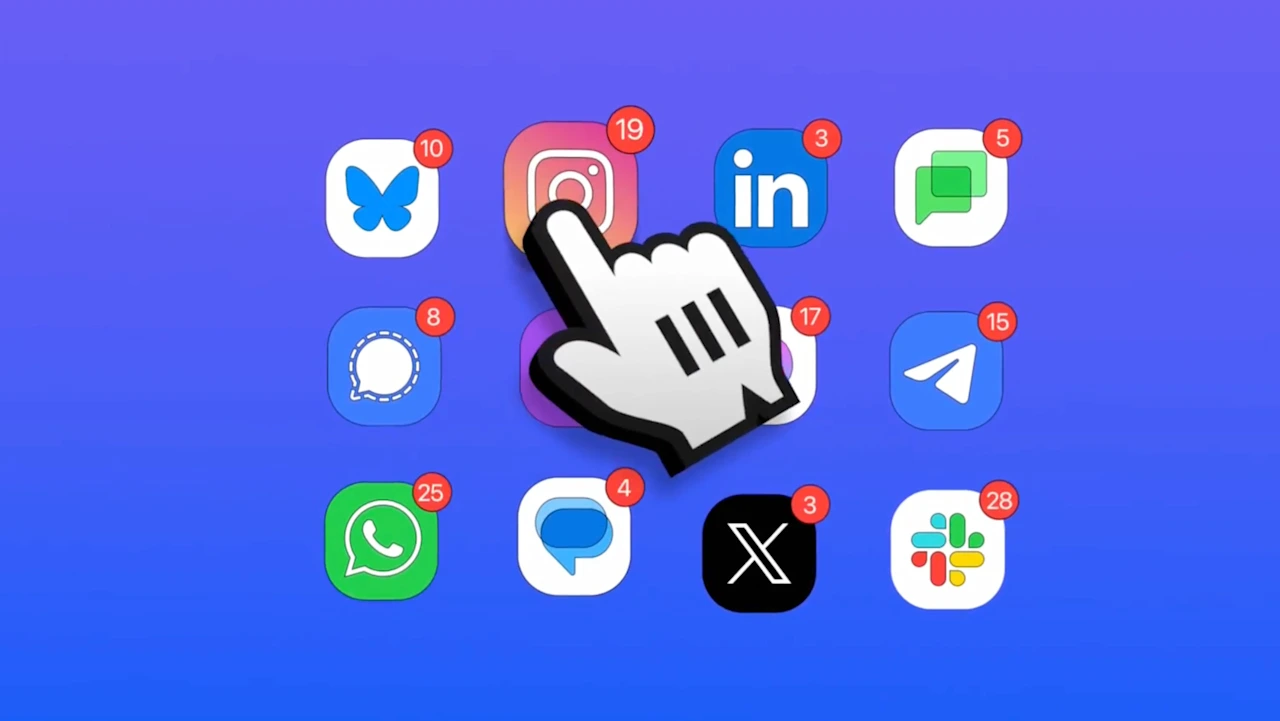
I like chatting with my friends—who doesn’t?—but I don’t always know where to find them. There are simply too many apps.
Some of my friends text, others use WhatsApp, while others yet insist on using Discord or the DM feature in whatever random social network they prefer. It’s a mess, and it can mean keeping several tabs open all day just to keep the conversations flowing. It makes you wish some application could combine all of your conversations into one place.
This is a dream that used to be reality. Applications like Trillian, Pidgin, and Adium all combined instant messaging services like AIM, MSN, and ICQ in one handy interface. Over time, though, messaging services got more protective of their APIs, and these sorts of all-in-one portals slowly stopped working.
The dream, it seems, is dead.
Or is it?
This tip originally appeared in the free Cool Tools newsletter from The Intelligence. Get the next issue in your inbox and get ready to discover all sorts of awesome tech treasures!
Messaging, minus the mess
Time to meet—or maybe just remember—an exceptional app that takes all of your messages and puts them in a single streamlined interface for easy, ongoing access.
The app is called Beeper. It can connect to all the major messaging platforms: Google Messages, WhatsApp, Instagram, Telegram, Google Chat, Facebook Messenger, Signal, LinkedIn, X, Discord, and Slack.
➜ It’s one application for all of your conversations no matter where they might be happening.
⌚ Installing Beeper is quick—a minute or two, tops, but adding in all of your messaging services could take longer, depending on how many different things you’re connecting.
Now, if Beeper rings a bell, there’s probably a reason. You may recall a controversy around Beeper a few years back involving Apple. The application was initially launched as a way for Android users to send “blue bubble” messages to Apple users—a feature Apple then worked diligently to shut down. (These days, Beeper can connect to iMessage only via its desktop Mac version.)
In the time since then, the program’s been acquired by Automattic, the same company behind WordPress and Tumblr, and given both new resources and a new reason for existing.
- If you have an Android phone, you can use it to manage your text messages alongside messages from other applications (something that, as an iPhone user myself, makes switching to Android a tempting option).
- And no matter what type of phone you’re using, combining several little-used messaging apps into one that you keep open—on your phone and/or computer—is in and of itself worthwhile.
- I hardly ever open LinkedIn or Facebook, for instance, and yet I never miss any messages on either platform with Beeper in the mix.
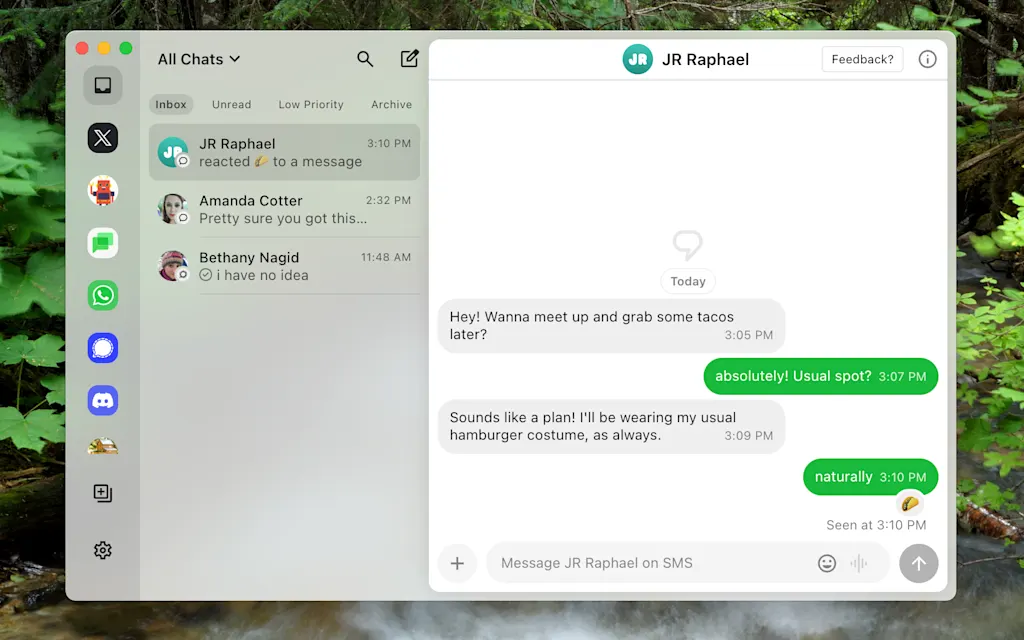
I’ve personally been using Beeper for years, and I love that it creates a single inbox for all of my ongoing conversations across any applications. Before this tool, I would constantly see a notification, intend to respond, and then never get around to it because the message came in via an application I don’t check often. That doesn’t happen anymore. I honestly believe Beeper makes me better at keeping in touch.
I also like that you can archive messages, allowing you to create a sort of “inbox zero” for text messages. If I see something I intend to respond to later, I simply leave it un-archived in my inbox—the same as I do with emails—then power through my messages whenever I have a minute.
There are a bunch of other nice features beyond that. On the desktop computer front, Beeper’s keyboard shortcuts—including a built-in command bar—mean I can jump between conversations without ever touching my mouse.
I could go on, but you get the idea. Beeper is just a well-put-together piece of software that solves a common problem. It takes a little bit of fidgeting to get going at first, but the results are 100% worth it.
- Beeper runs on Android, iPhone, iPad, ChromeOS, macOS, Windows, and Linux—so basically, everything.
- The service offers a free version that supports up to five accounts on different messaging services, which is probably plenty for most people. If you need to connect to more than that, you’ll have to spring for a paid subscription, starting at $10 a month (or $100 a year).
- Many of Beeper’s integrations run in the cloud, meaning an encrypted copy of your messages does get stored by the company. The privacy policy is pretty solid, though, and there are no ads or data monetization built into the application. It’s funded entirely by subscribers.
Treat yourself to all sorts of brain-boosting goodies like this with the free Cool Tools newsletter—starting with an instant introduction to an incredible audio app that’ll tune up your days in truly delightful ways.
Why did Apple subtract the “+” from Apple TV? 9:00 AM (7 hours ago)
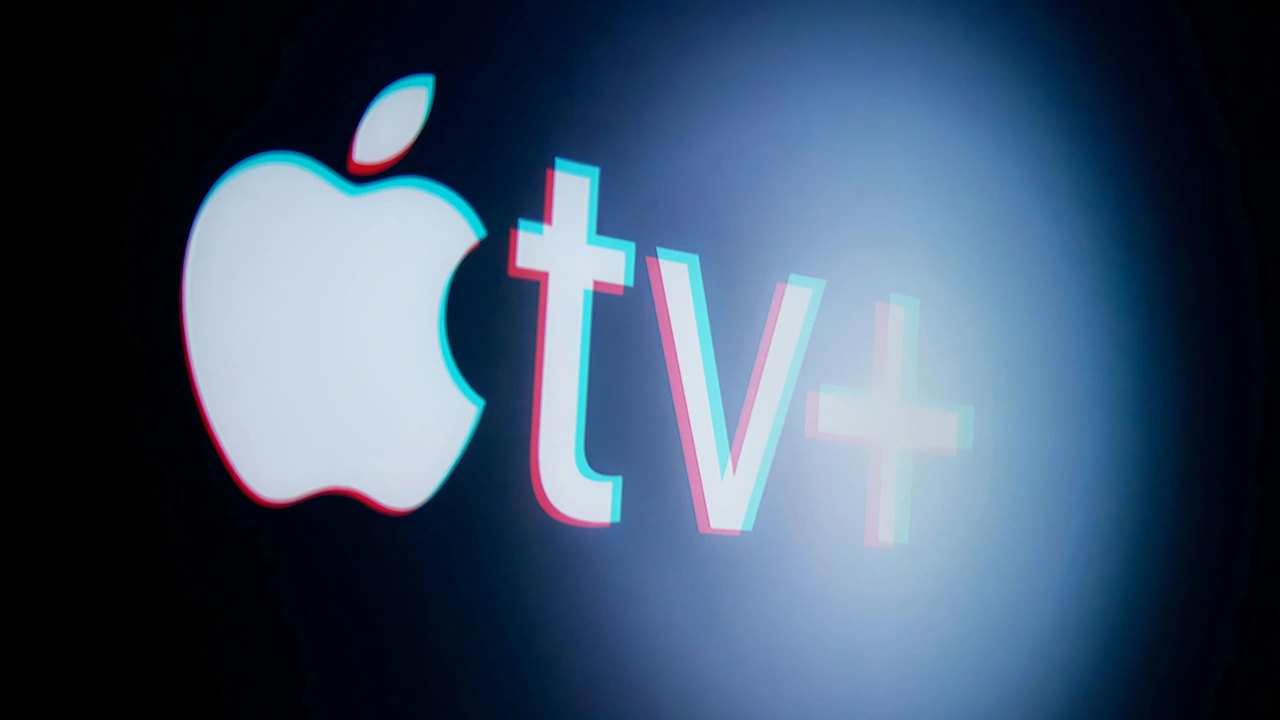
I was thrilled this week when Apple issued a press release announcing that its original film, F1 The Movie, starring Brad Pitt, would make its streaming debut on the company’s video service December 12. But it wasn’t the news about the movie that excited me. Rather, it was a small line at the end of the press release that quietly announced something else: “Apple TV+ is now simply Apple TV, with a vibrant new identity.”
The “+” branding on Apple TV+ always bugged me. Whenever I looked at it, I thought, “Apple TV plus what?” Apple News offers a free base version and a paid version that gets you more content, called “Apple News+,” which makes sense. But there’s never been a free version of Apple’s video streaming service, so what was the “+” signifying? The “+” branding had also grown increasingly tiresome over the years, as nearly every streaming service added the mathematical operator onto its name.
Mercifully, Apple has now decided to subtract the plus. Here’s the why, and how the company could go further toward to ending branding’s most tiresome scourge.
The company didn’t invent the “+”, but it embraced it like no other
Until this week, Apple had been leaning hard into the “+” branding for years—nearly as hard as it did to the much more iconic “i” branding in the early 2000s.
Apple debuted its first “+” branding all the way back in October 2011 with its AppleCare+ extended warranty program, which covered accidental damage to a user’s iPhone. It used an alphabetic version of the nomenclature with the iPhone 6 “Plus” model in 2014. But it wasn’t until 2019 that Apple began to go hog wild on “+”.
That year, Apple debuted the Apple News+ news subscription service and the Apple TV+ video streaming service. A year later, in 2020, Apple debuted the Apple Fitness+ workout streaming service, and a year after that, the company added its latest “+” service, iCloud+.
Yet Apple wasn’t the first tech or media company to tack “+” onto a product. The earliest I can remember is NBC Universal’s and News Corp’s “Hulu Plus” back in 2010, and then, several months before Apple debuted AppleCare+ in 2011, Google came out with its now-defunct social network Google+. The next major company to embrace the “+” was Disney, with ESPN+ in 2018.
However, the “+” really went viral in the final months of 2019. In September of that year, BET launched BET+. Two months later, Apple TV+ and the streaming giant Disney+ arrived. In the years that followed, we got more: Discovery+, Paramount+, AMC+, the short-lived CNN+, and more.
But it was Apple, with its no fewer than five “+” products, that was the clear cross-bearer—sorry, plus-bearer—for the techno-media industries.
Apple explains why it killed off the Apple TV “+”
Apple’s announcement to drop the “+” from Apple TV+ this week came out of the blue. However, shortly after the abrupt name change, the company explained its reasoning.
In an appearance on The Town podcast (via 9to5Mac), Apple’s senior vice president of Services, Eddy Cue, who oversees products including Apple Music, Apple News, and the newly named Apple TV, spoke about the subtraction of the “+”. Cue revealed that the company originally named its streaming service “Apple TV+” simply because Apple had used the “+” mark in its other subscription services, such as Apple News+ and iCloud+.
“But we do that when we have a free service and then there’s a paid version,” Cue acknowledged, noting the distinction between Apple TV and the company’s other paid services.
“We stayed consistent because of it,” Cue continued, admitting, “but we all called it Apple TV, and we said, given where we are today [with the service’s brand awareness], it’s a great time to [ditch the “+”], so let’s just do it.”
Apple shows no signs of entirely abandoning the “+”
My colleague, Grace Snelling, spoke to several branding experts the wake of the Apple TV service rebrand. They all seem to agree that Apple made the right move in dropping the +.
As Snelling noted, in the early days of the streaming wars that began in 2019, the “+” addendum attached to a name served as an easy identifier, indicating that the product being sold was a streaming service. However, now that the symbol has become ubiquitous, it has lost some of its branding power. As Cue pointed out, the Apple TV streaming service brand is now strong enough that the “+” is no longer needed.
Yet while Apple has now subtracted the “+” from Apple TV, the company remains firmly on the “+” side of the equation. Four of its products still carry the mathematical moniker: Apple News+, iCloud+, Apple Fitness+, and AppleCare+. Here, the + makes more sense than it ever did on Apple TV, since it signifies additional features. Cue’s comments suggest that Apple has no intention of eliminating the “+” from the rest of this product lineup.
Still, it’s worth noting that the removal of “+” from Apple TV’s name isn’t the first time in 2025 that Apple has eliminated the symbol from one of its products. In September, Apple replaced the iPhone Plus model in its smartphone lineup with the new iPhone Air.
Starbucks plans to close mobile-only pickup locations. It could be a risky move 8:00 AM (8 hours ago)
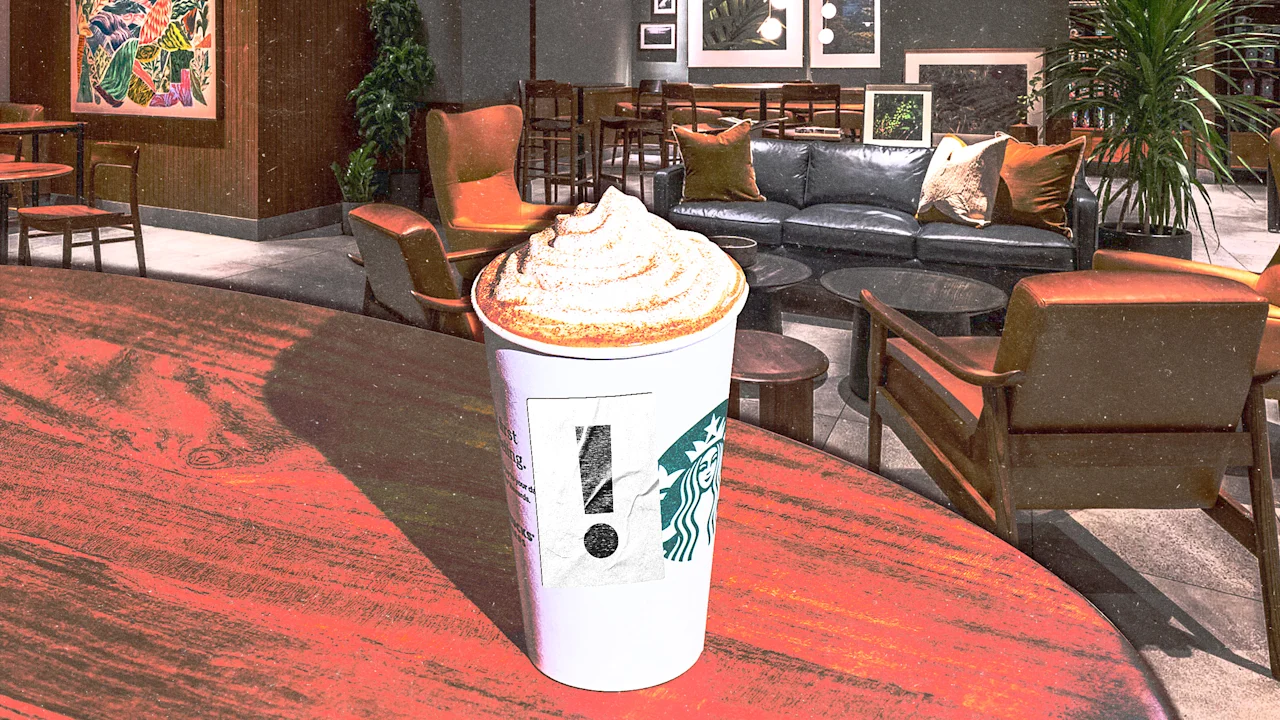
When Starbucks announced that it would phase out its mobile-order pickup-only locations beginning in 2026, it raised a question: Why abandon a format seemingly built for speed and efficiency?
As Starbucks CEO Brian Niccol explained in an earnings call, the pickup-only stores have a “transactional” feel, lacking “the warmth and human connection that defines our brand.”
While Niccol also touted the mobile-order options at its traditional coffee shops, I see Starbucks’s move as an attempt to return to its roots as a “third place”—a destination between home and work where people can gather and connect.
But this sort of pivot comes with trade-offs, and it creates interesting market opportunities for competitors. As a marketing professor and a coffee connoisseur, I’m offering this analysis to go with your morning cup of joe.
The two types of coffee shop patrons
In general, coffee shops attract two distinct customer segments. The first are what I call “stay-and-savor” customers—people who mostly use the site as a place to meet others or work. Their primary interest is in the space, not the mocha or muffins.
The second are “grab-and-go” customers—people who want a consistent product, delivered efficiently. They don’t linger at the store, so the place is less important to them than convenience, speed, and product quality. Think of the morning rush at your local coffee joint.
Starbucks’s pickup-only stores, branded as Starbucks PICK UP, cater to grab-and-go customers. If you don’t live in a busy area, you might never have heard of the brand: There are fewer than 100 Starbucks PICK UPs, many in densely packed cities.
In contrast, there are about 17,000 sit-in Starbucks stores across the United States. That means the company’s plan will affect just 0.5% of its locations. That’s not very much.
So why does this change have me a little, well, steamed up?
Back to the third place, whether you like it or not
As I said before, I see this move as part of an effort to emphasize “stay-and-savor” customers over their “grab-and-go” counterparts. Indeed, Niccol’s recent earnings call presentation claimed that Starbucks is “prioritizing warmth, connection, and community.” Starbucks also published a document stating its “principles for upholding the third place,” and its commitment seems to be more than just rhetorical.
The problem is that coffee shops aren’t like regular restaurants in terms of menu prices and customer spending. “Stay-and-savor” customers are costly to serve for coffee shops, and may generate insufficient revenue, making them less profitable. That could be bad for the bottom line.
The change could also have unintended consequences for workers and customers. For example, pickup-only stores allow employees to focus on food and beverage preparation, with less pressure to engage in small talk in the hopes of generating warmth and tips. Indeed, much academic research has shown that restaurant workers who serve customers report more emotional labor and stress and worse morale and well-being than those who don’t.
In contrast, Starbucks rivals such as Dunkin’ and the Chinese new entrant Luckin Coffee have embraced the grab-and-go customers. These rivals provide space for seating, but they don’t elevate their positioning as if their baristas are serving warmth, connection, and community.
Starbucks CEO Niccol has described the plan as a “sunsetting.” I’d watch out for Dunkin’ and Luckin Coffee and, of course, Starbucks’s financials in 2026, to determine whether the Starbucks sun sets or rises.
Vivek Astvansh is an associate professor of quantitative marketing and analytics at McGill University.
This article is republished from The Conversation under a Creative Commons license. Read the original article.
‘No Kings’ is not just in cities like Chicago, Boston, and NYC: These small towns are the beating heart of today’s protests 8:00 AM (8 hours ago)
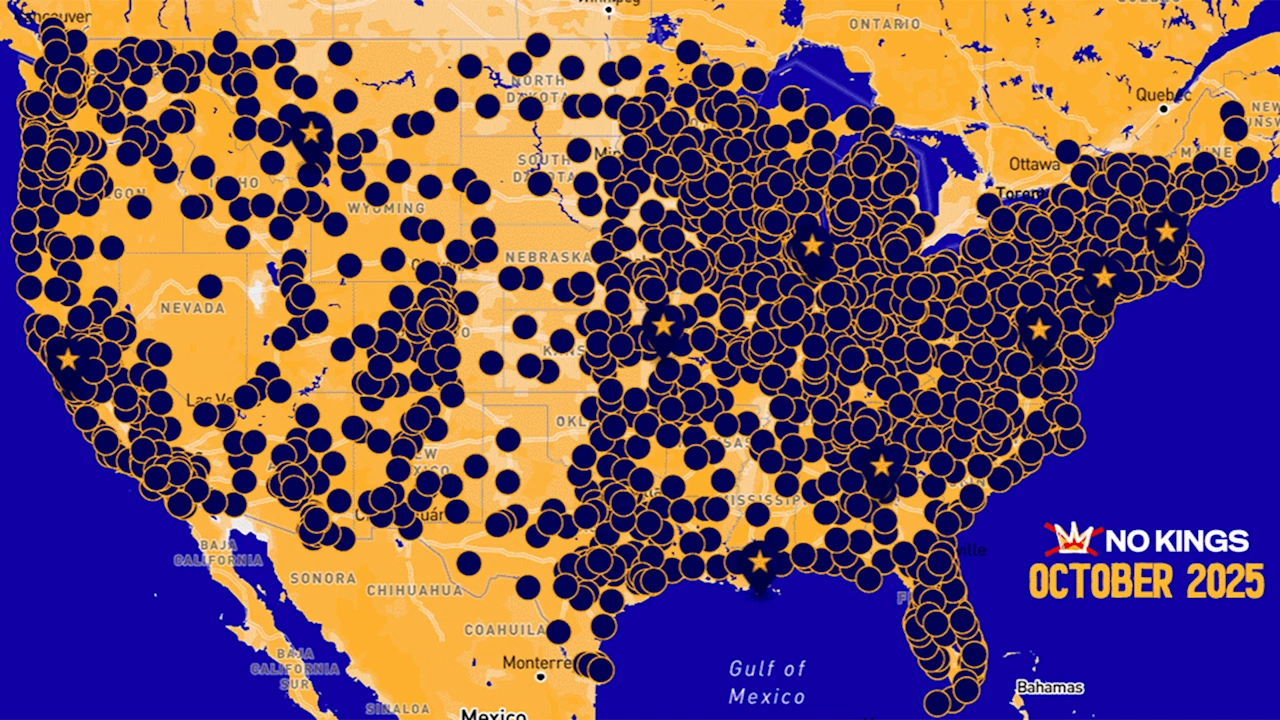
More than 2,700 “No Kings” anti-Trump protests and community events are scheduled to take place today, Saturday, October 18, in all 50 states and the District of Columbia. And a majority of those events are in small and medium-size towns, as the grassroots pro-democracy movement spreads to all corners of the country.
This latest protest comes amid a federal government shutdown and as Trump has deployed National Guard troops to an increasing number of American cities.
The event is organized by Indivisible, a progressive grassroots movement, and a coalition of more than 20 partners that includes the American Civil Liberties Union (ACLU), the American Federation of Teachers (AFT), 50501, and MoveOn.
It builds on the momentum of the first “No Kings Day” protest on June 14—and today’s event is expected to exceed that day’s turnout of 5 million people.
“We are anticipating the largest turnout in Washington, D.C.; Chicago; NYC; Boston; Atlanta; New Orleans; San Francisco; Kansas City; Honolulu; and Bozeman, Montana,” the “No Kings” organizers said in a statement emailed to Fast Company.
While organizers are anticipating the largest gatherings in major cities, which may grab most of the headlines, a majority of the events are actually taking place in rural, small, and midsize towns.
This map shows a complete list of locations for the “No Kings” events in each state scheduled nationwide. (A core principle of the protests is nonviolence, and the No Kings.org website also provides training in de-escalation.)
Fast Company has rounded up some of the events taking place in lesser-known cities, which form the backbone of the “No Kings” movement today. Here are six of them below.
Bryson City, North Carolina
In Bryson City (population 1,500), attendees are gathering for a public protest on Main Street.
Burns, Oregon
No Kings Harney County is gathering in Burns (pop. 2,700) “in peace and solidarity to voice our opposition to government overreach, and our support for the First Amendment . . . and all those oppressed by the MAGA regime.”
Storm Lake, Iowa
Protestors in Storm Lake (pop. 12,000) are “once again standing up to say, ‘NO KINGS IN AMERICA’” at the town sign, as they did for the first “No Kings” event in June.
Traverse City, Michigan
The Traverse City (pop. 16,000) event is being held at the Grand Traverse County Civic Center, and it will include speakers, live music, and a demonstration. Attendees are encouraged to bring items to donate to local food banks.
Maryville, Tennessee
Organizers in Maryville (pop. 32,000) are encouraging local participants to “dress to honor democracy,” by wearing costumes celebrating American icons like Uncle Sam, the Statue of Liberty, and historical heroes who defended democracy.
Manitowoc, Wisconsin
Manitowoc (pop. 35,000) is holding a rally and food drive in Washington Park, the site of the town’s first county fair in 1859, that will include a performance by the Raging Grannies of Madison, a social justice organization of older women with chapters in eight countries.
When you should ‘burn a bridge’ in your career and 5 ways to do it 6:00 AM (10 hours ago)

We’ve all heard it: For decades, it’s been a crux of career advice. Keep every door open. Stay on good terms. Never fully walk away. Don’t burn that bridge.
But that advice was followed during a different time and for workplaces that were designed to keep you in line, not further your career. In today’s fast-moving workforce, clinging to outdated relationships, toxic workplaces, or unfair structures isn’t loyalty. It’s self-sabotaging.
It’s time to rethink what was once considered the norm. Sometimes burning a bridge isn’t reckless. It’s strategic. It’s the first step toward building something better in your career.
Why “Don’t Burn Bridges” No Longer Works
The original phrase came from the military: destroy the bridge behind you so you can’t retreat. In modern work life, it’s been turned into “never cut ties,” even if those ties are choking your growth.
The reason for this advice? To protect the system, not you. To make sure you don’t disrupt the corporate hierarchy, question what was once considered normal, or hold higher powers accountable.
But when you’re trauma-bonded to bad bosses, toxic workplaces and colleagues, or exploitative industries, staying connected keeps you stuck. It prevents advancement. It robs you of the energy you need to move forward.
Let’s be clear: walking away is complicated.
Here are five ways to burn bridges and do it in a way that’s bold, healthy, and future-career focused:
1. Walk away, with both feet. If you’re constantly keeping one foot in the past and one in the present, you’ll never fully be able to march toward your future. When you make the decision to break free from a place or a person holding you back, you must commit to the ending. Any ambivalence will send mixed messages to what you no longer want in your life and to yourself.
Stop meeting your former toxic boss for coffee. Don’t “like” and comment on posts by the person who mistreated you. Block the number in your phone that sends a shiver down your spine every time you see it pop up. Cut the cord.
2. Stand for your boundaries. Create, communicate, and comply with the boundaries that you need and require that those who you allow in your life do the same. Writer, broadcaster, and podcaster Emma Gannon is known for saying, “The only people who get upset when you start setting boundaries are the ones who benefited from you not having them.” You will be met with resistance because you are no longer allowing others to mistreat you. Don’t take that pushback as a sign to retreat. It’s working. This is what it looks like.
Decide where you will spend your time and energy and who with. Is the monthly networking dinner you signed up for still serving you? What about the subscription to the organization that no longer feels aligned? It’s time to stop feeding the people and places that no longer support the life you’re designing. Cancel what’s not adding value.
3. Protect yourself. Who is the version inside of you who wasn’t—or isn’t—safe? Now, go to them and tell them that you know a way out. Lead them there, hand in hand, and don’t stop until you get to the other side. So much of growth is about knowing better and then, doing better. You now have the power to rewrite your story. Make sure you’re the main character in this edition.
Do you remember what it felt like to be in the midst of your career chaos? It’s time to hold that emotion again and release it. Write a letter to that version of yourself acknowledging, honoring, and validating the experience. Tell them what you’re doing differently now so that it will never happen again. So much of healing and moving forward is dependent upon witnessing what was. And getting those feelings out of your body onto paper is a powerful tool in the process.
4. Build your own bridge. We spend a lot of time running to the next thing. Preparing for the next challenge. Rushing to achieve the next milestone. It’s a perfect recipe for never enjoying anything you’ve worked for. Stop. Look around. This was your goal at one point in time. And even if it’s not exactly the way you want it to be, you have achieved so much. Stand at the peak of your in-between. Look to the left at where—and who—you’ve been. Look to the right at where you’re going, at who you’re meant to be. Thank them, the you of this moment. They deserve to be celebrated.
Share what you’re doing with people you trust. Yes, they can hold you accountable, but they will also be there to celebrate these important steps you’re taking: burning the bridges to a past that no longer serves you; building a bridge to a future that is ready to fulfill you. You can’t do it alone. Surround yourself with the people who want to see you win.
5. Walk to the other side. Your new bridge is built. The decaying and diseased bridges are burned. All the planning and strategizing and vision boarding in the world means nothing unless you take action. Rewiring the conditioning inside of you that tells you “don’t burn bridges” takes effort, determination, and commitment. But the act of making a different choice—of reprogramming an operating system that at one point brought you safety, success, and solace—takes conviction. You must commit to this shift and start changing your daily habits if you want to realize this new life for yourself. No one else will do it for you. It is up to you.
This is our way forward: New system. New rules. New path.
Let’s stop asking others for directions to places they’ve never been. Let’s stop taking directions from others to places they’ll never go. Let’s build our own bridges. On our own terms.
I’ve gone back too many times—to people and places in my career that have burned me; I’ve put my hand into the fire again and again thinking that maybe, this time, it won’t be so hot. I’ve slipped back while climbing my way out of quicksand because giving in felt so much easier. I even taught myself that it actually felt good.
When we always keep one foot behind, wedged inside this mythical “door” that must remain open indefinitely, we never fully move forward.
It’s time. Close the door. Walk away. Burn the bridge. Build a new bridge. Cross it.
“Burning bridges” isn’t self-destructive. It’s an act of self-preservation. And you will always be worth saving.
What Sora’s Martin Luther King Jr. problem revealed to OpenAI 17 Oct 8:30 PM (20 hours ago)
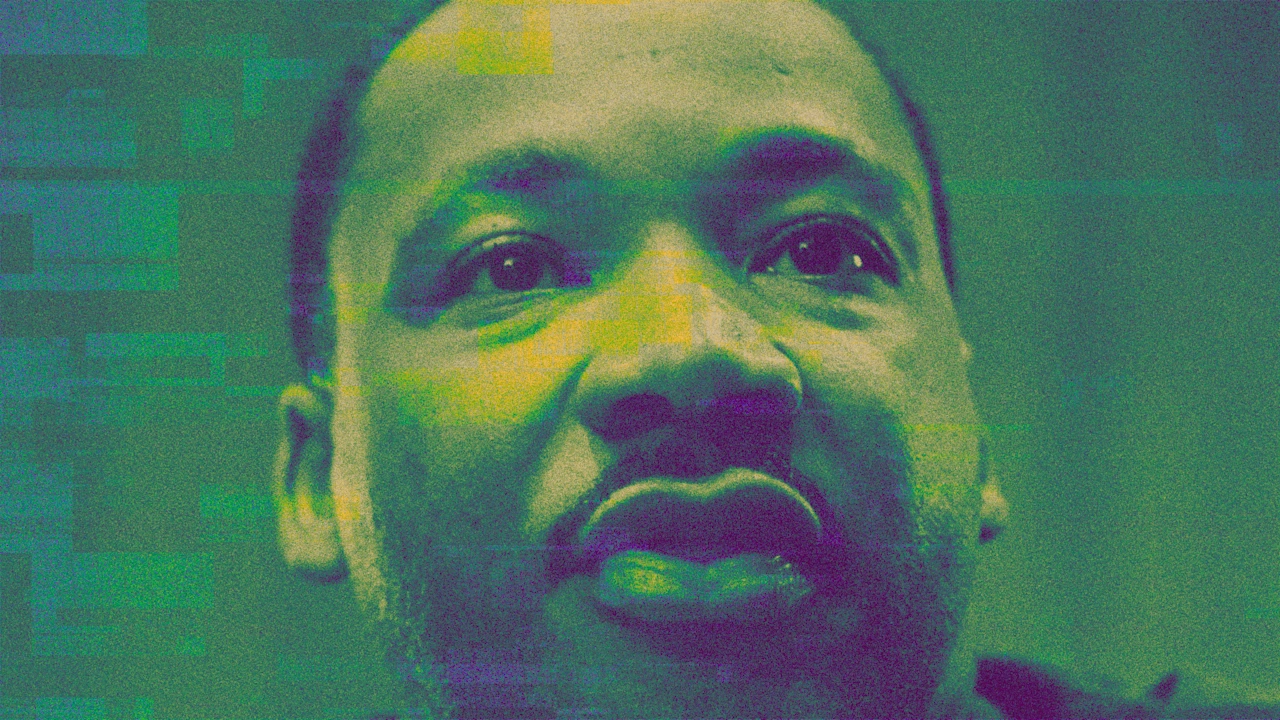
Martin Luther King Jr. did plenty to change the world for the better. And nearly 60 years after his assassination, he’s at the center of a major concession by the world’s leading AI company that puts a battle over intellectual property and the right to control one’s image into the spotlight.
In the weeks after OpenAI released Sora 2, its video generation model, into the world, King’s image has been used in a number of ways that his family has deemed disrespectful to the civil rights campaigner’s legacy. In one video, created by Sora, King runs down the steps of the site of his famous “I Have a Dream” speech, saying he no longer has a dream, he has a nightmare. In another video, which resembles the footage of King’s most famous speech, the AI-generated version has been repurposed to quote Tyga’s “Rack City,” saying, “Ten, ten, ten, twenties on your titties, bitch.” In another, which Fast Company is not linking to, King makes monkey noises while reciting the same famous speech.
“I can’t say how shocking this is,” says Joanna Bryson, a professor of AI ethics at the Hertie School in Berlin.
Bryson, a British citizen since 2007 but born in Milwaukee, says the videos featuring King are particularly distasteful because of his role in historical events. “I was born in the 1960s, so any kind of atrocity against his memory is incredibly distressing,” she says. “But also, his family is famously excellent and activist in protecting his legacy.”
That activist intervention has resulted in OpenAI rethinking its approach to how people are depicted on Sora. Sort of.
King is far from the only famous dead person whose image has been re-created and resuscitated with the help of Sora, as Fast Company has previously reported. While King’s estate has managed to secure something of a climbdown from OpenAI in one form—the AI firm said on October 16 it “believes public figures and their families should ultimately have control over how their likeness is used”—the concession is only a partial one. The public statement continues: “Authorized representatives or estate owners can request that their likeness not be used in Sora cameos.”
“This is an embarrassing climbdown for a company that just two weeks ago launched a deepfake app that would generate realistic videos of pretty much anyone you liked,” says Ed Newton-Rex, a former AI executive who now runs Fairly Trained, a nonprofit that’s making an effort to certify companies that respect creators’ rights. “But removing one person’s likeness doesn’t go nearly far enough. No one should have to tell OpenAI if they don’t want themselves or their families to be deepfaked.”
An opt-out regime for public figures to not have their images used (some would argue abused) by generative AI tools is a far cry from the norms that have protected celebrities and intellectual property owners in the past. And it’s an onerous requirement on individuals as much as corporations to try and stay on top of. (Separately, Fast Company has reported that OpenAI’s enforcement of registering Sora accounts in the names of public figures has been patchy at best.)
Indeed, the huge imposition that such an opt-out regime would have on anyone has been appealed at governmental levels. Following Sora 2’s release, the Japanese government petitioned OpenAI to stop infringing on the IP of Japanese citizens and companies.
With the King videos, however, the dispute goes beyond intellectual property alone. “This is less of an IP issue and more of a self-sovereignty issue,” says Nana Nwachukwu, a researcher at the AI Accountability Lab at Trinity College Dublin. “I can look at IP as tied to digital sovereignty in these times, so that makes it a bit complex. My face, mannerisms, and voice are not public data even if—big if—I become a viral figure tomorrow. They’re the essence of my identity. Opt-out policies, however intentioned, are often misguided and dangerous,” she says.
Bryson contends, “We simply can’t ask every historic figure to rely on this kind of body to ‘opt out’ of sordid depictions. It would make more sense to demand some lower bounds of dignity in the depiction of any recognizable figure.”
Newton-Rex, who has long been a critic of the way AI companies approach copyright and intellectual property, adds, “It’s really very simple. OpenAI should be getting permission before letting their users make deepfakes of people. Anything else is incredibly irresponsible.”
OpenAI has defended its partial stand-down by saying “There are strong free speech interests in depicting historical figures.” A spokesperson for the company told The Washington Post this week: “We believe that public figures and their families should ultimately have control over how their likeness is used.”
Bryson believes that some sort of AI-specific approach to how living figures are depicted through these tools is needed, in part because of the speed at which videos can be produced, the low barrier to entry to doing so, and the low cost at which those outputs can be disseminated. “We probably do need a new rule, and it will unfortunately only depend on the brand of the AI developer,” she says. “I say ‘unfortunately’ because I don’t expect the monopoly presently enforced by compute and data costs to hold. I think there will be more, less expensive, and more geographically diverse DeepSeek moments [in video generation].”
Experts aren’t exactly celebrating OpenAI’s climbdown over the King videos as a major moment, in part because it still tries to shift the window of acceptability over IP and celebrity further than it stood before Sora was unleashed on the world. And even then, there may still be work-arounds: Three hours after OpenAI published its statement in conjunction with King’s estate, an X user shared another video of the iconic figure.
In this one, at least, King’s words aren’t too twisted. But the fact that it could be made at all is. “I have a dream,” the AI character says to applause, “where Sora changes its content violation policy.”
Apple’s new deal with Formula One aims to grow U.S. audience 17 Oct 8:30 PM (20 hours ago)
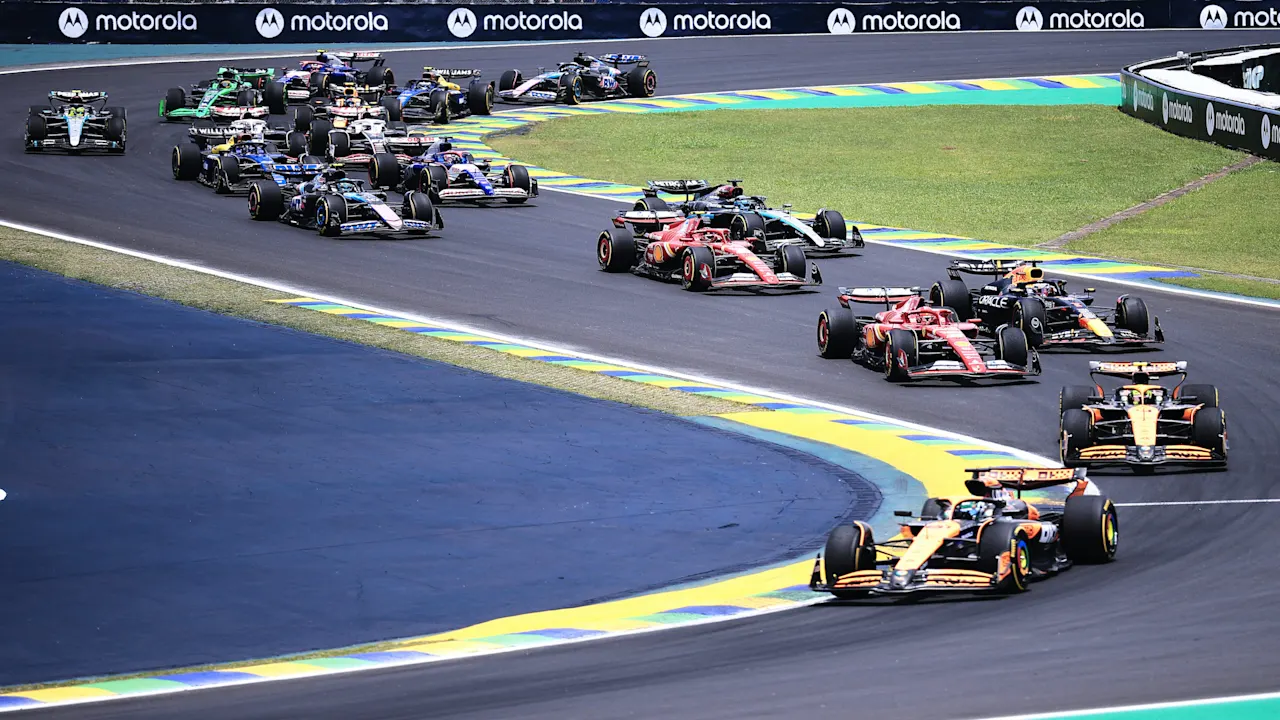
Formula One announced a five-year deal Friday with Apple, which will be the global motorsports series’ U.S. broadcast partner beginning next season.
ESPN had been the broadcast partner since 2018 and through the explosion of popularity of F1 in the United States, but it notified the series at the start of this year that it would not be extending its deal.
At the same time, Apple was working with the series on F1: The Movie, an original film released internationally in cinemas and Imax in June. It will make its global streaming debut on Apple TV in December, and has already grossed nearly $630 million globally—as both the most successful sports movie in history and the most lucrative of Brad Pitt’s career.
The relationship made Apple the front-runner to land the U.S. broadcast rights. Financial terms were not released.
“I feel like I am on the podium. This is amazing,” said Eddy Cue, Apple‘s senior vice president of services. “Our vision for Apple TV—we wanted to deliver customers the best story from the most creative storytellers. We launched in 2019, we started with nine original series, and now we’ve got a deep library of over 300 shows and movies and thousands of hours.
“And everyone on Apple TV in the U.S. will now get Formula One,” he added. “They’re going to get everything that Formula One has to offer.”
Apple plans to air F1 on Apple TV as well as amplify the series across Apple News, Apple Maps, Apple Music, Apple Sports, and Apple Fitness+. Apple TV will also host all practice, qualifying, sprint sessions, and races.
Select races and all practice sessions throughout the season will also be available to watch for free in the Apple TV app. F1 TV Premium, F1’s own premier content offering, will continue to be available in the U.S. via an Apple TV subscription and will be free to Apple subscribers.
Apple TV is available in over 100 countries and regions on over 1 billion screens, including iPhone and other products, such as PlayStation and Xbox gaming consoles.
Cue said Apple’s reach will only help grow F1 in the United States, which currently hosts races in Miami, Las Vegas, and this weekend in Austin.
“The many millions of Apple TV viewers that we have in the U.S., we know many of them are Formula One fans, hopefully, and we know that many of them are not yet,” he said. “We’re going to be able to bring [new fans] to the table right away; that’s very much low-hanging fruit.”
The deal with Apple was praised by Dan Towriss, CEO of TWG Motorsports and the Cadillac Formula One team that will debut next season.
“As we build a truly American team, Apple’s scale, influence, marketing and, most importantly, deep commitment to innovation will bring us to American audiences in exactly the ways we want to reach them,” Towriss said.
Stefano Domenicali, F1 president and CEO, noted the potential for growth.
“This is an incredibly exciting partnership for both Formula One and Apple that will ensure we can continue to maximize our growth potential in the U.S. with the right content and innovative distribution channels,” Domenicali said. “We have a shared vision to bring this amazing sport to our fans in the U.S. and entice new fans through live broadcasts, engaging content, and a year-round approach to keep them hooked.”
Domenicali also praised the coverage and growth ESPN brought the series over eight seasons.
“We’re incredibly proud of what we and Formula One accomplished together in the United States and look forward to a strong finish in this final season,” ESPN said in a statement. “We wish F1 well in the future.”
—By Jenna Fryer, AP auto racing writer
Retro design is making a comeback in tech and home decor 17 Oct 8:09 PM (20 hours ago)
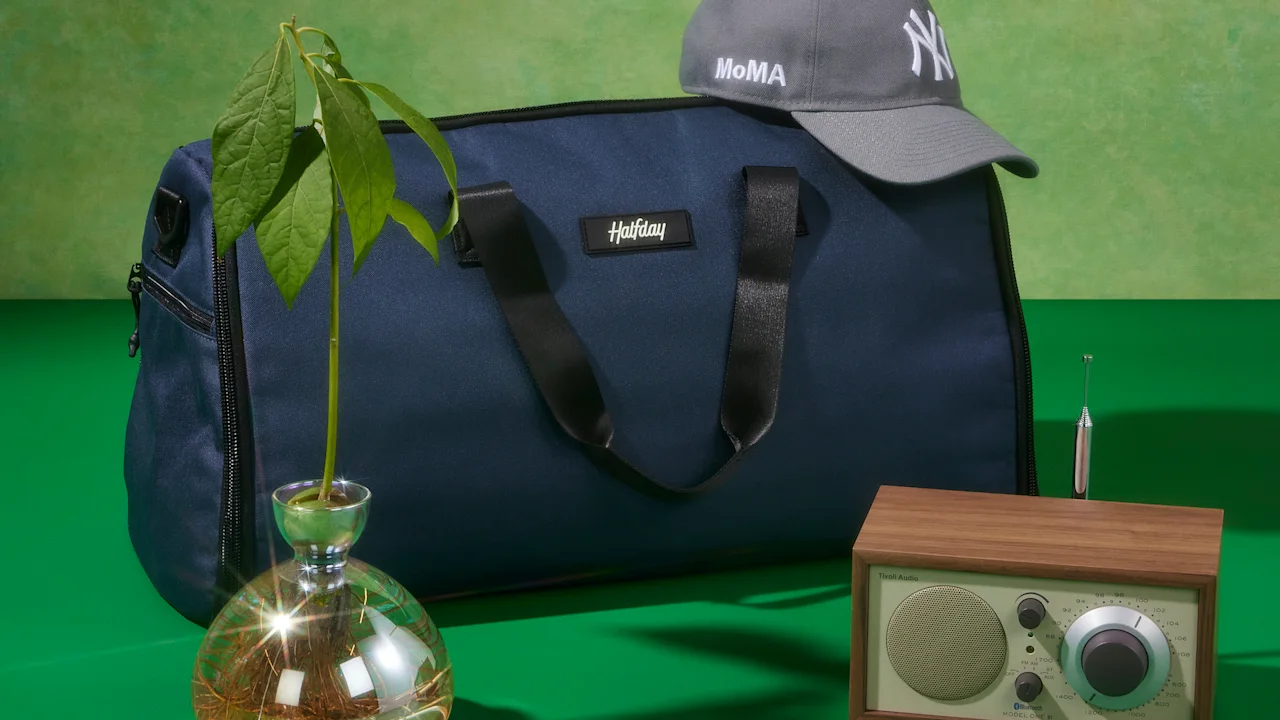
It might start with a cassette deck that streams Spotify and charges your phone. It doesn’t have to stop there.
These days, yesterday is big business.
A retro revival is underway in the design world: mushroom-shaped lamps, walnut stereo consoles, daisy dishware, neon Polaroid cameras. It’s like our homes just hustled over from One Day at a Time or That ’70s Show, or moonwalked in from Thriller-era 1982.
Welcome to the retro reset, where ’70s, ’80s, and ’90s aesthetics are getting a second life. It’s not just in fashion and film but in home decor and tech, too. Whether you actually lived through it or long for a past you never experienced, nostalgia is fueling a surge of interest from Gen X to Gen Z, in throwback styles that blend vintage charm with modern convenience.
Old-school tech, new-school tricks
A big part of the trend is tech that looks analog but functions digitally. Think portable CD players in the kind of candy colors popular at Radio Shack in the 1970s, AM/FM radios equipped with USB outputs, or turntables with Bluetooth amplification to wireless speakers. Compact radios styled after 1970s transistor models now double as smart speakers.
There’s even a growing market for clunky-but-charming mini cathode-ray-style TVs—and boom boxes with streaming capability. It’s as if the Carter, Reagan, and Clinton eras have collided with the latest of the digital age.
What draws us? Some of it is the tactile appeal of dials and buttons—of interacting with something that feels solid, more “real.”
In a room, these elements aren’t just nods to the past. They’re also aesthetic statements that add way more character than a giant, flat, black screen, or a “smart” sound system you can’t even see. Stereo consoles in a wood-grain finish or a pastel-colored lacquer offer not only music, but also a nice furniture addition to a space. (Though who knows: Will those minimalist black screens be “retro” one day for our children and grandchildren?)
“Whether it’s turntables, cassette players, speakers, or musical instruments, there’s definitely a fascination among younger audiences with analog technology and how things worked before the digital age,” says Emmanuel Plat, merchandising director for MoMAstore, the design shop at New York’s Museum of Modern Art.
The store has Tivoli’s Model One table radio, with a throwback-style, wood-grain frame, circle speaker grill, and knobs, but 2025’s sound quality and connectivity. They’re also stocking pocket synthesizers, Bluetooth turntables, and “Peanuts”-themed Polaroid cameras and cassette tape players.
Who’s into it—and why
Gen Z is seeing it all with fresh eyes and enjoying the hunt for vintage or vintage-look stuff. Millennials and Gen Xers may enjoy reliving their childhood aesthetics.
And that can be comforting in today’s stressed world, says Joseph Sgambatti, 37, a design journalist in New York City. “Nostalgia-driven design choices become comforts that help us cope,” he says.
There’s also an ironic social-media component to the trend.
“Mid-century modern and retro design objects are simple, often show-stopping artifacts,” Sgambatti says. “These finds carry a lot of social currency in a generation that prioritizes publishing their life online.”
Style trends do tend to arrive in cycles—think Happy Days portraying the 1950s for the 1970s, or the current Gen Z crush on Y2K fashion. Plus, a steady diet of nostalgia-rich media—from Stranger Things to Barbie—has reintroduced retro design to younger audiences.
But there’s also an emotional component. After years of digital overload and pandemic-era disruptions, we’re gravitating toward styles that feel warmer, softer—more human, even.
Colors that carry meaning
If you walk by the E.C. Reems Academy, an elementary school in Oakland, California, or Houston’s Children’s Assessment Center, you can’t miss the vibrant graphic murals done by Berkeley-based Project Color Corps. The group, which helps transform libraries, schools, and other community spaces with eye-catching wall art, often uses graphics, typefaces, and an overall palette with a ’70s and ’80s vibe.
In the 1970s, “we sought solace in warm, earthy tones that symbolized grounding and stability. Browns, oranges, olive greens, and deep yellows dominated the aesthetic landscape, reflecting the growing Earth movement,” says Laura Guido-Clark, who founded the nonprofit.
It was a different aesthetic in the ’80s—one dripping with materialism, consumerism, the emergence of “yuppie” culture, says Guido-Clark. “Neon colors, bold patterns, and vibrant fashion choices.”
And there’s affection for that, too.
Her group recently worked with the design firm Gensler on a lounge space at Chicago’s NeoCon trade fair for commercial interior design. The space featured retro-flavored colors and motifs.
Gensler’s design director, Marianne Starke, says the colors draw viewers into a sensory experience that might be rooted in memory: “a popsicle on a ’90s summer day, an ’80s striped T-shirt, a rollerskating rink in the ’70s.”
Furniture with curves and confidence
In furniture, the revival of those slightly distant decades leans toward soft silhouettes, rounded edges, and a low-slung vibe. Arched bookshelves, bubble chairs, Lucite tables, and terrazzo finishes have all reentered the conversation. Wallpaper and textile patterns feature bold geometrics, Memphis-style squiggles, and Pop-Artsy botanicals.
It’s a deliberate swing away from the chilly gray-on-white-on-gray look that farmhouse modern decor gave us for the past couple of decades.
In the process, eras get conflated. Who’s to say whether an inspiration or design comes precisely from the ’70s, the ’80s, or the ’90s—or contains elements of all three?
Designers are even revisiting some once-controversial elements of the disco era: Smoked glass, chrome accents, and mirrored surfaces are making subtle (not a word often used in connection with the 1970s) comebacks in upscale interiors and product lines.
Whether it’s a lava lamp grooving on a media console, daisies and doves dancing on wallpaper, or a sofa rocking a bunch of ruffly chintz pillows, the retro revival feels less like a gimmick and more like a shift in how people want to live—integrating elements of the past that offer comfort and delight.
As long as those cassette players keep syncing to Bluetooth and we can stream Annie Hall, Saturday Night Fever, or Miami Vice, the past, it seems, is here to stay—at least until our own moment inevitably becomes a nostalgia play in itself.
—By Kim Cook, Associated Press
Banking with MrBeast? 17 Oct 7:17 PM (21 hours ago)

The MrBeast burger. MrBeast toys. Rumors of a MrBeast phone company. Could a MrBeast bank be next?
The world’s most-subscribed-to YouTuber, with 446 million subscribers, has filed an application with the U.S. Trademark and Patent Office for a service called MrBeast Financial.
The recent trademark application for the latest venture from 27-year-old MrBeast—whose real name is Jimmy Donaldson—lists plans for a “mobile app and online services for a range of banking, financial advisory, crypto exchange, and other services.”
The venture has not yet been approved, and the full details remain unclear. However, the trademark application, which was filed on October 13, aligns with a 2025 fundraising pitch deck, reported by Business Insider, outlining his plans to expand into financial services.
Much of MrBeast’s content is built on the promise of huge cash prizes in exchange for partaking in bizarre tasks. “Would You Risk Dying for $500,000?” is the title of one video posted this month. “Survive 30 Days Chained to Your Ex, Win $250,000,” reads another.
Now, rather than throwing money at fans, he wants to help them manage it.
“Having to explain to your wife and 3 kids MrBeast is taking your house away because you didn’t pay your mortgage on time, and the only way you can get it back is by winning Beast Games Season 3 on Amazon Prime,” one X user joked.
Yet, it’s easy to see why a self-made twentysomething, who’s big on philanthropy, would be an appealing financial role model to his predominantly young audience. A 2023 study found that Gen Zers place greater importance on being rich than any other age demographic and that Gen Alphas are already busy earning big bucks online before they’re even old enough to drive.
If this latest venture gets off the ground, it would join Donaldson’s growing list of companies, which includes the chocolate and snack brand Feastables and the packaged food brand Lunchly, as well as his Amazon Prime series Beast Games. Through these various exploits, he achieved billionaire status in 2024.
He has admitted, however, that his mom still controls his bank account.
Apple just stole something massive from ESPN—and no one saw it coming 17 Oct 7:00 PM (21 hours ago)
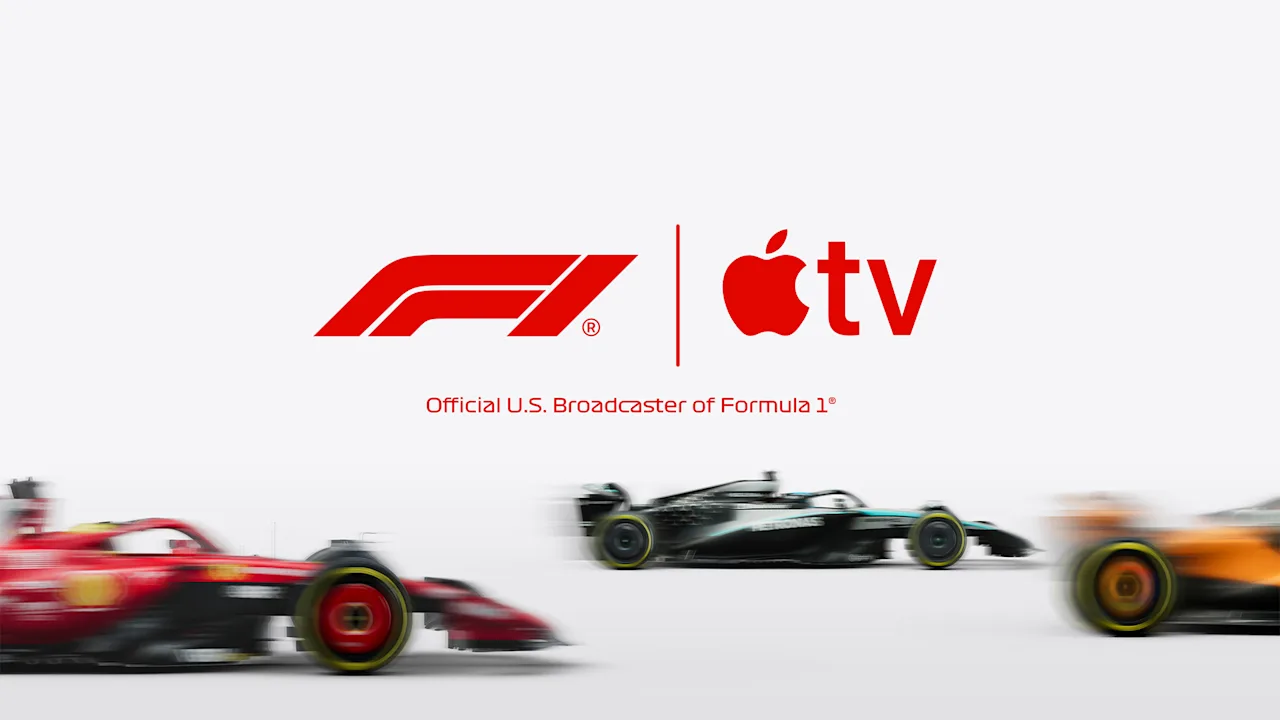
Apple’s mission to remake Apple TV into a streaming hub for sports is on track, literally.
Apple will buy exclusive broadcast rights to Formula One (F1) races in the U.S. for the next five years, the company announced Friday. Apple cited the success of F1: The Movie in its decision to partner more deeply with Formula One, as the international motorsport gains a foothold among U.S. viewers.
The five-year deal aims to extend the appeal of an Apple TV subscription to a broader swath of viewers while converting existing Apple TV users into racing fans, if things go as planned. Terms of the deal weren’t disclosed, but reports from CNBC and New York Times-owned The Athletic put it in the ballpark of $140 million.
Apple TV will air practice, qualifying, and sprint sessions and Grand Prix events for subscribers, and some races and all practice sessions will be available for free through the Apple TV app. F1’s existing subscription service, F1 TV Premium, will remain available in the U.S. only through Apple TV.
“We’re thrilled to expand our relationship with Formula One and offer Apple TV subscribers in the U.S. front-row access to one of the most exciting and fastest-growing sports on the planet,” said Eddy Cue, Apple’s senior vice president of services. “2026 marks a transformative new era for Formula One—from new teams to new regulations and cars with the best drivers in the world—and we look forward to delivering premium and innovative fan-first coverage to our customers in a way that only Apple can.”
The deal follows Apple’s success with the summer blockbuster F1: The Movie, starring Brad Pitt, its highest-grossing original film to date. The movie earned $293 million at the box office 10 days after release and marked a high point for Apple’s at times faltering film strategy. After earning $629 million at the global box office to date, the racing film will hit Apple’s streaming service on December 12.
Streamers scoop up sports
With the Apple deal, F1 will leave its existing media partner, ESPN, for greener pastures. ESPN was paying roughly $90 million for each F1 season, but Apple offered around $140 million to poach broadcast rights to the sport, according to CNBC. Apple’s move to throw cash at a growing sport to lure it away from a stagnant ESPN contract has echoes of Paramount’s recent $7.7 billion play for UFC, which will double what it earns each season under its new terms.
In its announcement, Apple notes that it will boost the sport across its suite of apps, including Apple News, Apple Maps, Apple Music, and Apple Fitness+. Apple’s Sports app will include live F1 updates, real-time leaderboards, driver standings, and a special home screen widget.
Apple’s F1 deal isn’t its first foray into sports in the U.S. In 2022, Apple announced a 10-year deal to air all Major League Soccer matches. The company charges $14.99 for MLS Season Pass, its soccer streaming package, on top of an Apple TV subscription, though existing subscribers get a few bucks off.
Based in the U.S. and Canada, MLS doesn’t approach the popularity of soccer leagues in Europe and South America, but it does host Argentine legend Lionel Messi. Messi signed with Inter Miami in 2023, giving the world a reason to tune in to Apple’s exclusive MLS streams and earning a revenue-sharing agreement with the tech giant to boost the more than $20 million he makes on the field each season.
In 2022, Apple also picked up the streaming rights to weekly Major League Baseball doubleheaders, branded as Friday Night Baseball, during the regular season. The company pays $85 million a season for the games, but it’s not yet clear if that relationship will continue as MLB negotiates new media rights deals for its games.
Even if Apple does back away from its exploratory relationship with MLB, it’s clear the company sees big potential in owning the rights to stream growing sports in the United States. Soccer and F1 aren’t exactly niche sports, but neither dominates U.S. viewership like the classic American trifecta of football, basketball, and baseball. With a big boost at the box office over the summer, F1’s U.S. growth might be on the cusp of booming, a trend Apple hopes to amplify by bringing its races under the Apple TV umbrella.
Sports media startup OffBall is finding traction with a new way to engage fans: WhatsApp group chats 17 Oct 6:10 PM (22 hours ago)
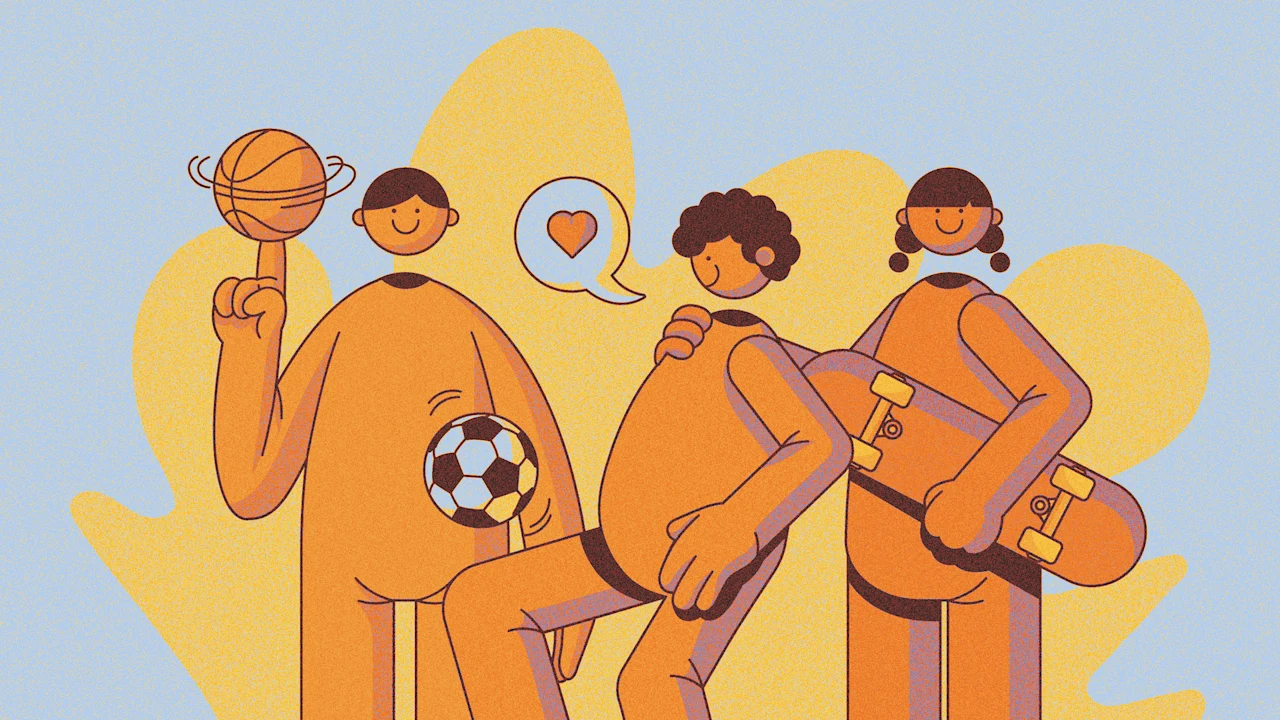
Would you want to be in a group chat with your favorite sports celebrities and athletes? You’ll have your chance this fall, thanks to a collaboration between WhatsApp and OffBall.
OffBall, a year-old sports media startup that focuses on careful curation for its followers, announced on Friday that it was bringing back The Chat, which it had previously conducted with sports stars such as LeBron James.
The franchise is designed to get users to participate in big group chats and discuss sports or anything else. High-profile personalities—such as professional athletes, celebrity fans, and others—also take part, and everyone can text or message each other like in any other group chat, or simply follow along with the discussion.
With the success of previous iterations of The Chat, OffBall is going to hold additional Chats featuring Formula One (F1) driver Daniel Ricciardo, media personality Kylie Kelce (wife of former NFL player Jason Kelce and future sister-in-law of Taylor Swift), and NBA players Tyrese Maxey and Tyrese Haliburton.
The Chats will occur during live sporting events, allowing fans to engage and discuss what’s happening, Offball said. The company describes it as a unique “second screen” experience.
Here’s the announced schedule for the future Chats:
- October 19: F1 Austin Grand Prix with Ricciardo and pro motocross/supercross racers Hunter Lawrence and Jett Lawrence.
- November 12: NBA Los Angeles Lakers versus Oklahoma City Thunder with Maxey and Haliburton.
- November 23: NFL Indianapolis Colts versus Kansas City Chiefs with Kylie Kelce and comedian Caleb Hearon.
In an interview published earlier this year by Lia Haberman on her Substack newsletter ICYMI, OffBall cofounder Michaela Hammond said that The Chat was born of athletes’ love of social media and fans’ love of group chatting around sports.
“The Chat is built on an existing product feature on WhatsApp called Communities,” Hammond said. “People already use it for larger community-based chats, like neighborhoods, parents at a school, and workplaces.”